
Classic Greece & the Amalfi Coast
Classic Greece & the Amalfi Coast
Cruise overview
WHY BOOK WITH US?
- ✔ The Deluxe Cruises’ team has extensive experience in ultra-luxury cruising.
- ✔ Call now to speak to our helpful and experienced Cruise Concierge team.
- ✔ Enjoy our Unique Deluxe Cruises Bonus for substantial savings.
- ✔ Our team will tailor your holiday to your exacting requirements.
- ✔ As agents, we work under the protection of each cruise lines ABTA / ATOL licences
About Piraeus
It's no wonder that all roads lead to the fascinating and maddening metropolis of Athens. Lift your eyes 200 feet above the city to the Parthenon, its honey-color marble columns rising from a massive limestone base, and you behold architectural perfection that has not been surpassed in 2,500 years. But, today, this shrine of classical form dominates a 21st-century boomtown. To experience Athens—Athína in Greek—fully is to understand the essence of Greece: ancient monuments surviving in a sea of cement, startling beauty amid the squalor, tradition juxtaposed with modernity. Locals depend on humor and flexibility to deal with the chaos; you should do the same. The rewards are immense. Although Athens covers a huge area, the major landmarks of the ancient Greek, Roman, and Byzantine periods are close to the modern city center. You can easily walk from the Acropolis to many other key sites, taking time to browse in shops and relax in cafés and tavernas along the way. From many quarters of the city you can glimpse "the glory that was Greece" in the form of the Acropolis looming above the horizon, but only by actually climbing that rocky precipice can you feel the impact of the ancient settlement. The Acropolis and Filopappou, two craggy hills sitting side by side; the ancient Agora (marketplace); and Kerameikos, the first cemetery, form the core of ancient and Roman Athens. Along the Unification of Archaeological Sites promenade, you can follow stone-paved, tree-lined walkways from site to site, undisturbed by traffic. Cars have also been banned or reduced in other streets in the historical center. In the National Archaeological Museum, vast numbers of artifacts illustrate the many millennia of Greek civilization; smaller museums such as the Goulandris Museum of Cycladic Art Museum and the Byzantine and Christian Museum illuminate the history of particular regions or periods. Athens may seem like one huge city, but it is really a conglomeration of neighborhoods with distinctive characters. The Eastern influences that prevailed during the 400-year rule of the Ottoman Empire are still evident in Monastiraki, the bazaar area near the foot of the Acropolis. On the northern slope of the Acropolis, stroll through Plaka (if possible by moonlight), an area of tranquil streets lined with renovated mansions, to get the flavor of the 19th-century's gracious lifestyle. The narrow lanes of Anafiotika, a section of Plaka, thread past tiny churches and small, color-washed houses with wooden upper stories, recalling a Cycladic island village. In this maze of winding streets, vestiges of the older city are everywhere: crumbling stairways lined with festive tavernas; dank cellars filled with wine vats; occasionally a court or diminutive garden, enclosed within high walls and filled with magnolia trees and the flaming trumpet-shaped flowers of hibiscus bushes. Formerly run-down old quarters, such as Thission, Gazi and Psirri, popular nightlife areas filled with bars and mezedopoleia (similar to tapas bars), are now in the process of gentrification, although they still retain much of their original charm, as does the colorful produce and meat market on Athinas. The area around Syntagma Square, the tourist hub, and Omonia Square, the commercial heart of the city about 1 km (½ mi) northwest, is distinctly European, having been designed by the court architects of King Otho, a Bavarian, in the 19th century. The chic shops and bistros of ritzy Kolonaki nestle at the foot of Mt. Lycabettus, Athens's highest hill (909 feet). Each of Athens's outlying suburbs has a distinctive character: in the north is wealthy, tree-lined Kifissia, once a summer resort for aristocratic Athenians, and in the south and southeast lie Glyfada, Voula, and Vouliagmeni, with their sandy beaches, seaside bars, and lively summer nightlife. Just beyond the city's southern fringes is Piraeus, a bustling port city of waterside fish tavernas and Saronic Gulf views.

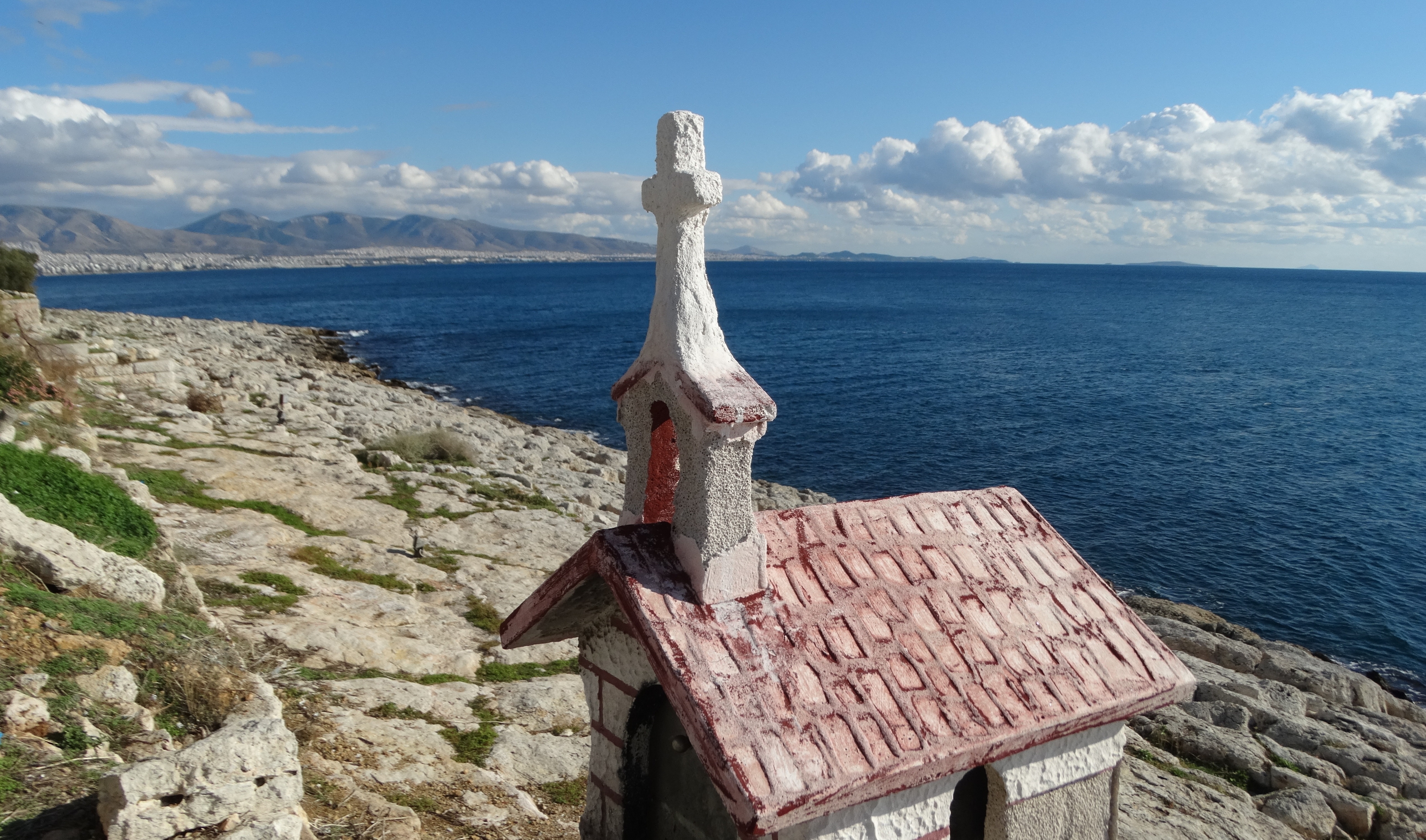
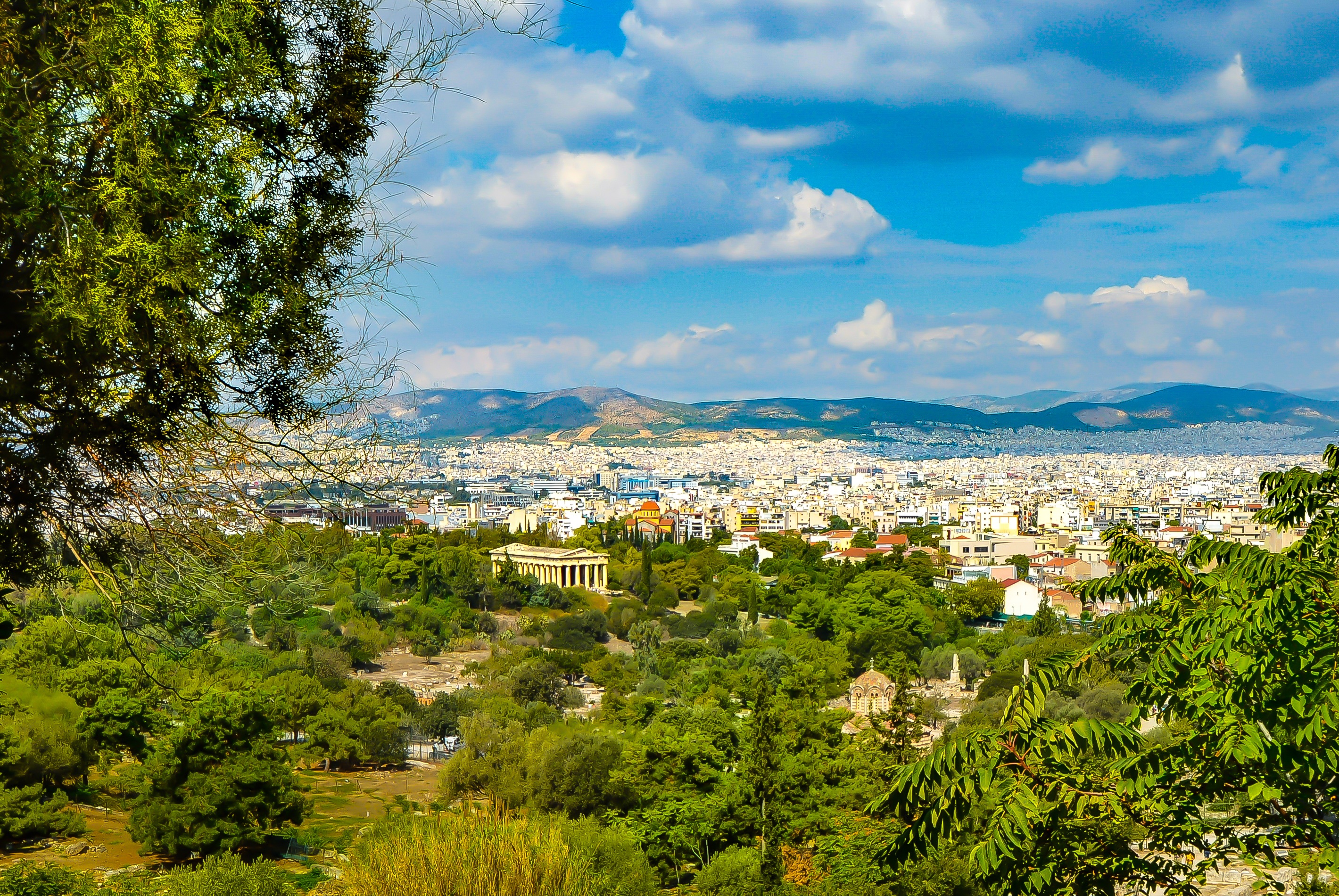

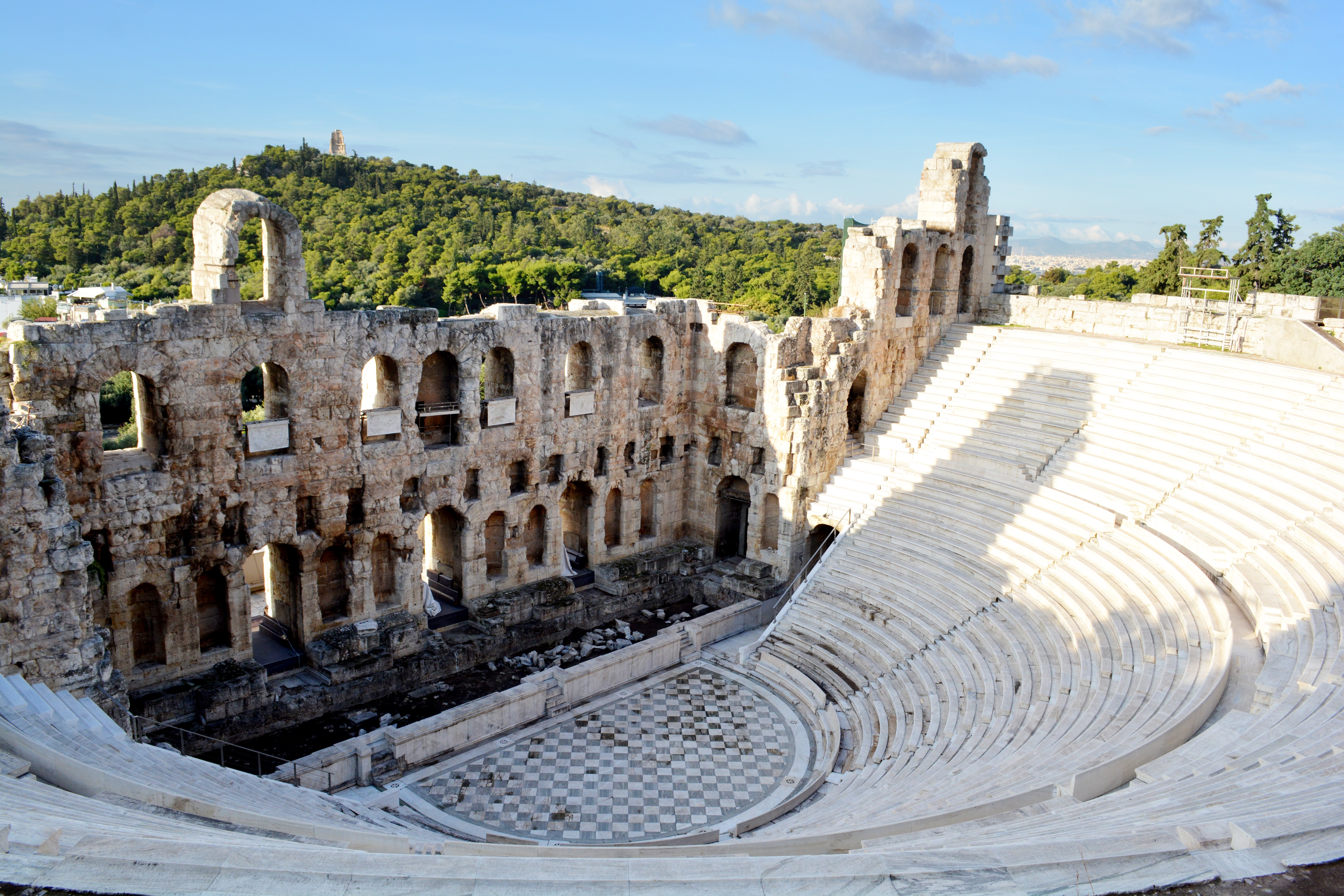
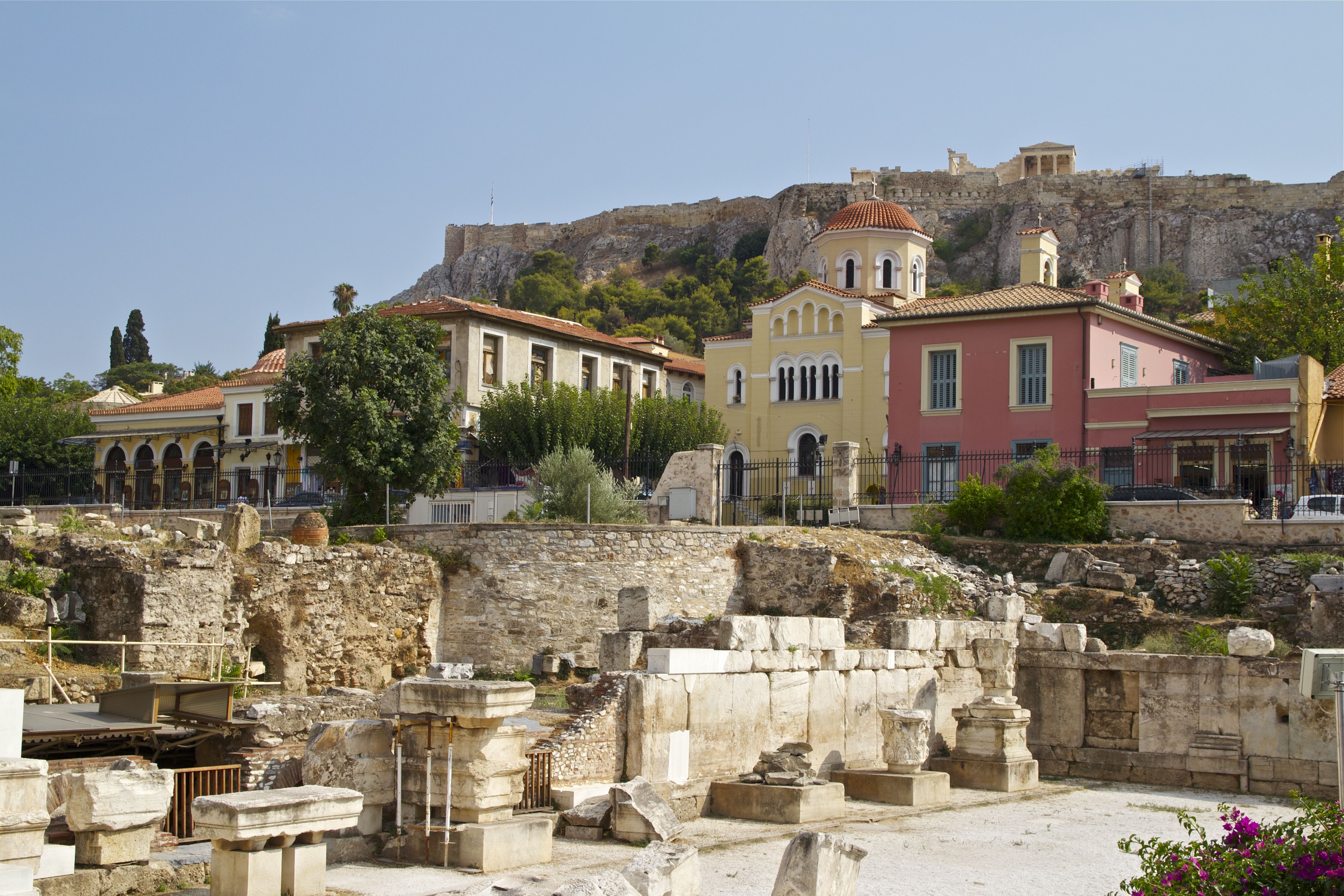
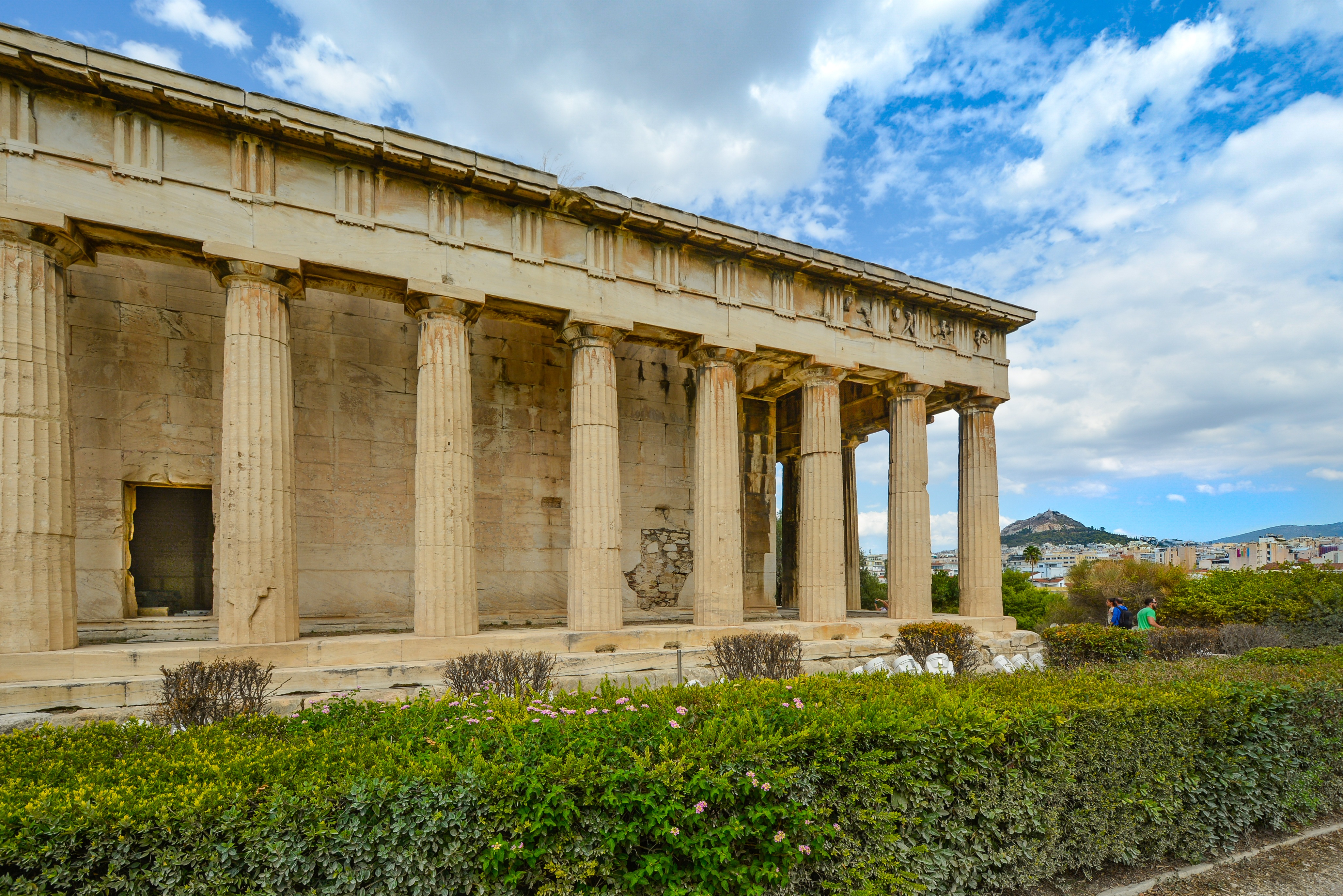
About Hydra
Rising from the turquoise expanse of the sunny Mediterranean, Hydra is the counterpoint of choice for Athenians - who can swap the city chaos for blissful relaxation with an hour’s boat journey. Known for its inspiring celebrity appeal - Leonard Cohen bought a house here in the 60s - Hydra is a pretty island of rising streets, whitewash mansions, and carefree clamour. Located a stone's throw from the Greek mainland, the authorities have resisted the temptation to cash in, meaning Hydra remains an endearing time-warp, which revels in life in the slow lane. With cars and new building developments banned – discover an island of donkeys plodding cobbled streets, and fishing boats undulating gently on the harbour’s waves.

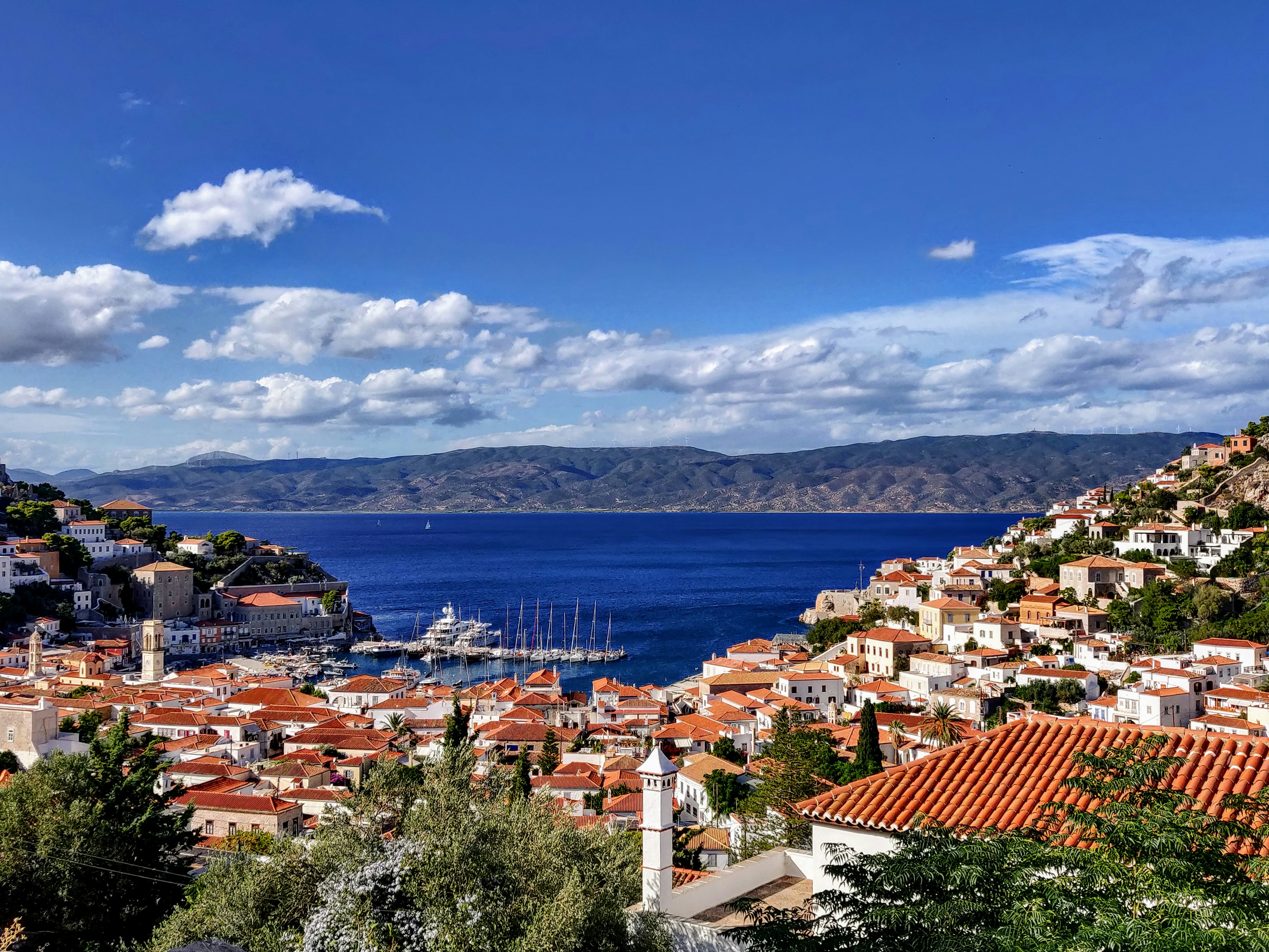
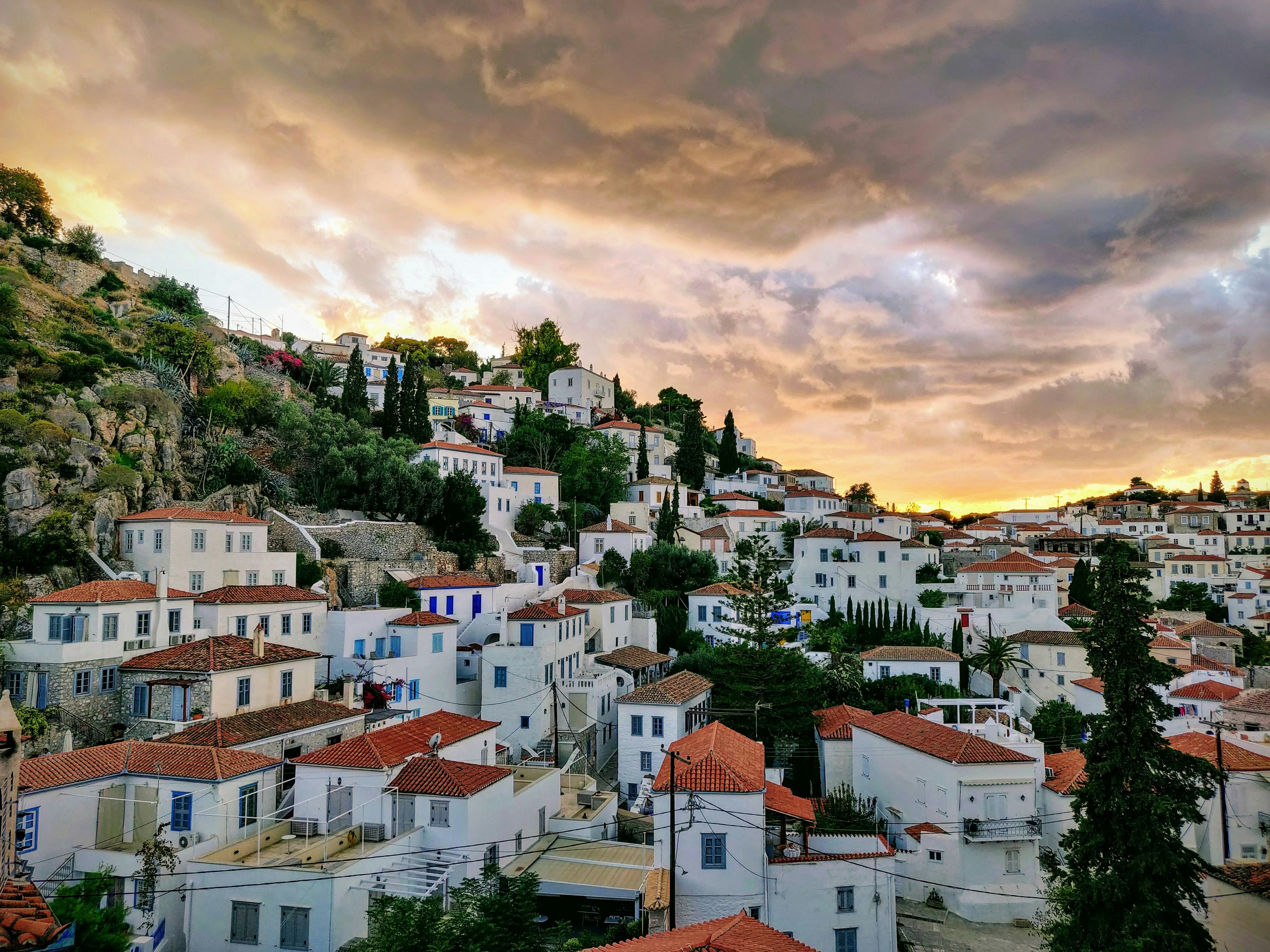
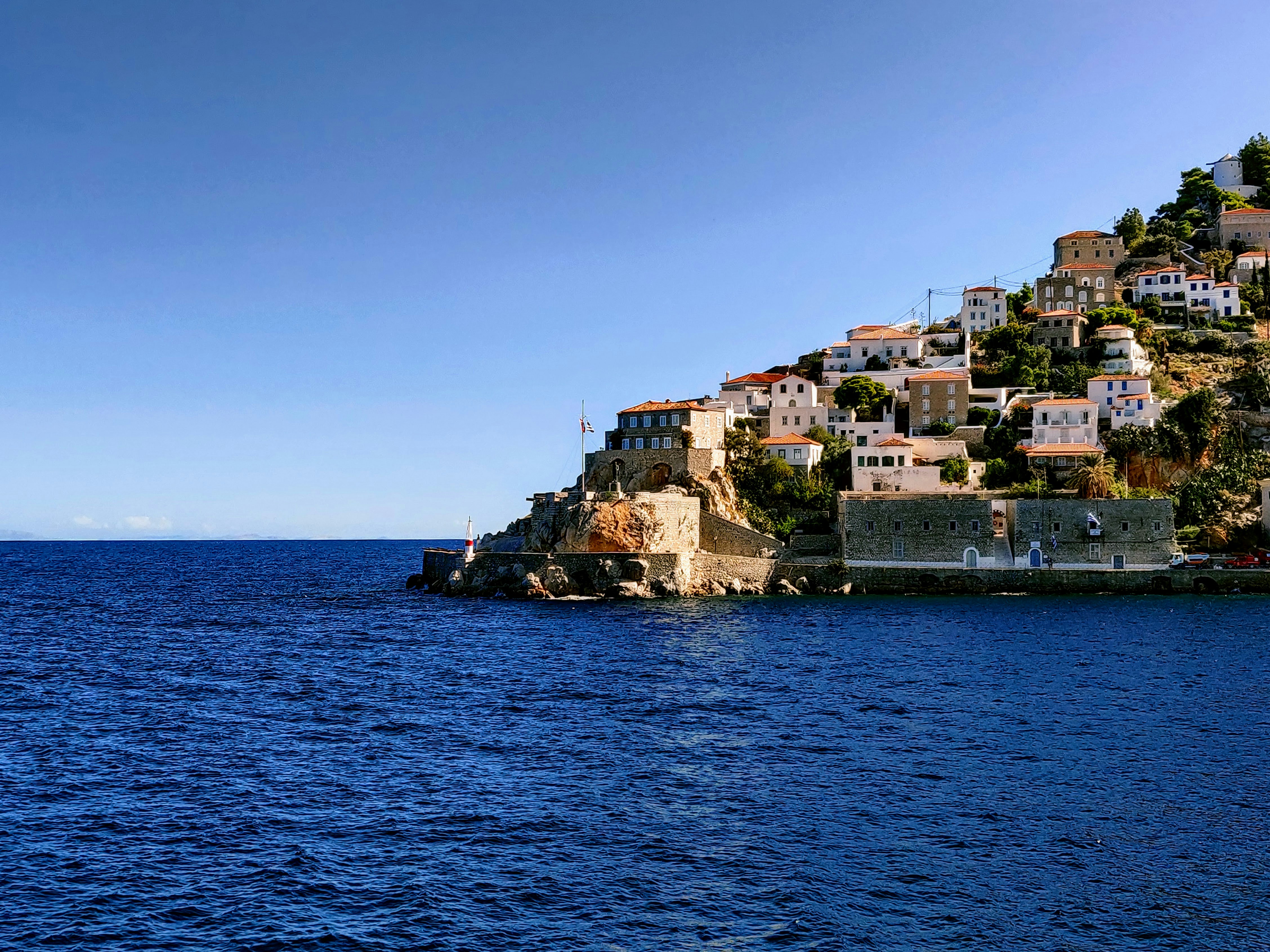
About Itea
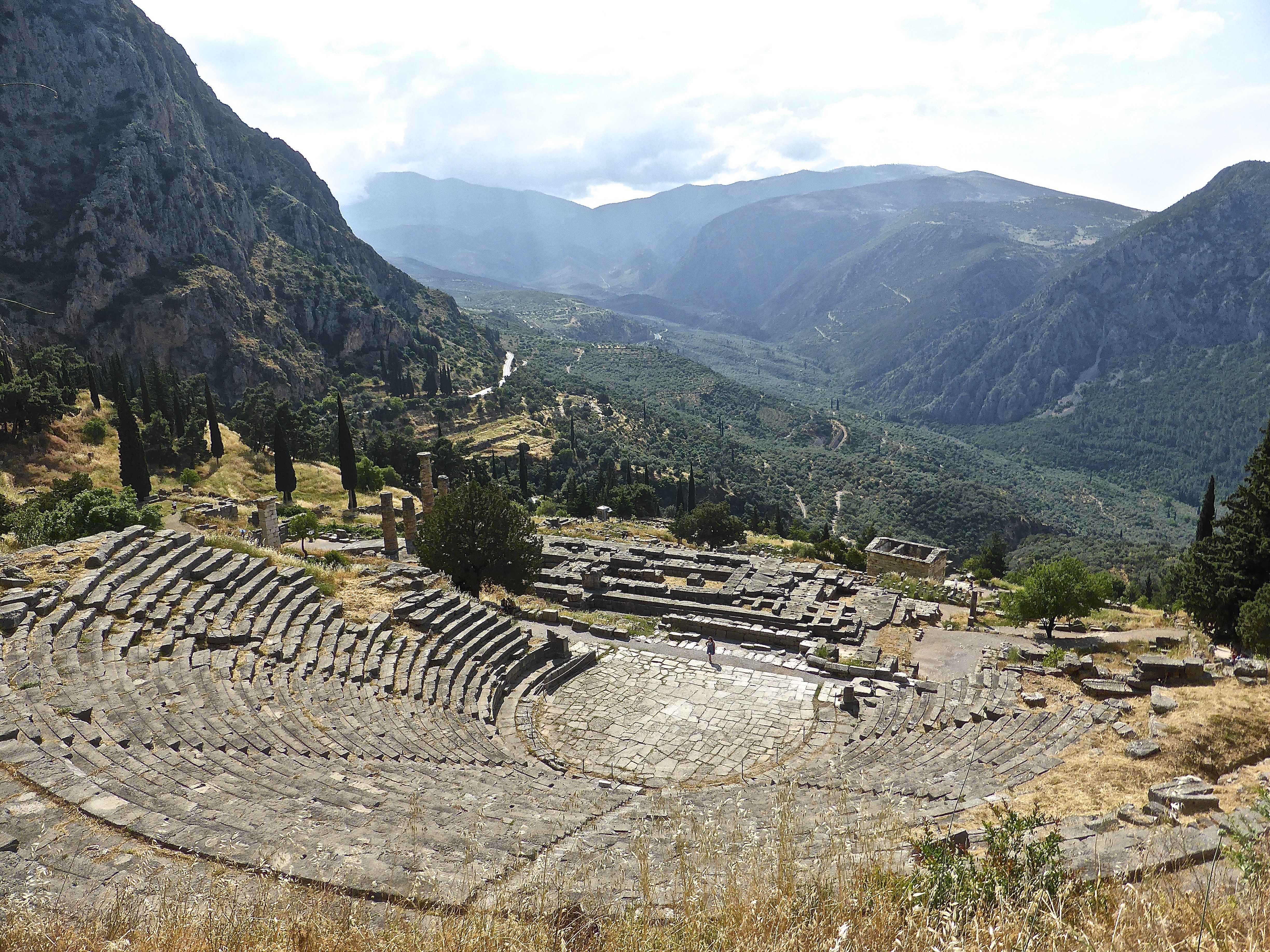
About Taormina
The medieval cliff-hanging town of Taormina is overrun with tourists, yet its natural beauty is still hard to dispute. The view of the sea and Mt. Etna from its jagged cactus-covered cliffs is as close to perfection as a panorama can get—especially on clear days, when the snowcapped volcano's white puffs of smoke rise against the blue sky. Writers have extolled Taormina's beauty almost since it was founded in the 6th century BC by Greeks from nearby Naxos; Goethe and D. H. Lawrence were among its well-known enthusiasts. The town's boutique-lined main streets get old pretty quickly, but the many hiking paths that wind through the beautiful hills surrounding Taormina promise a timeless alternative. A trip up to stunning Castelmola (whether on foot or by car) should also be on your itinerary.
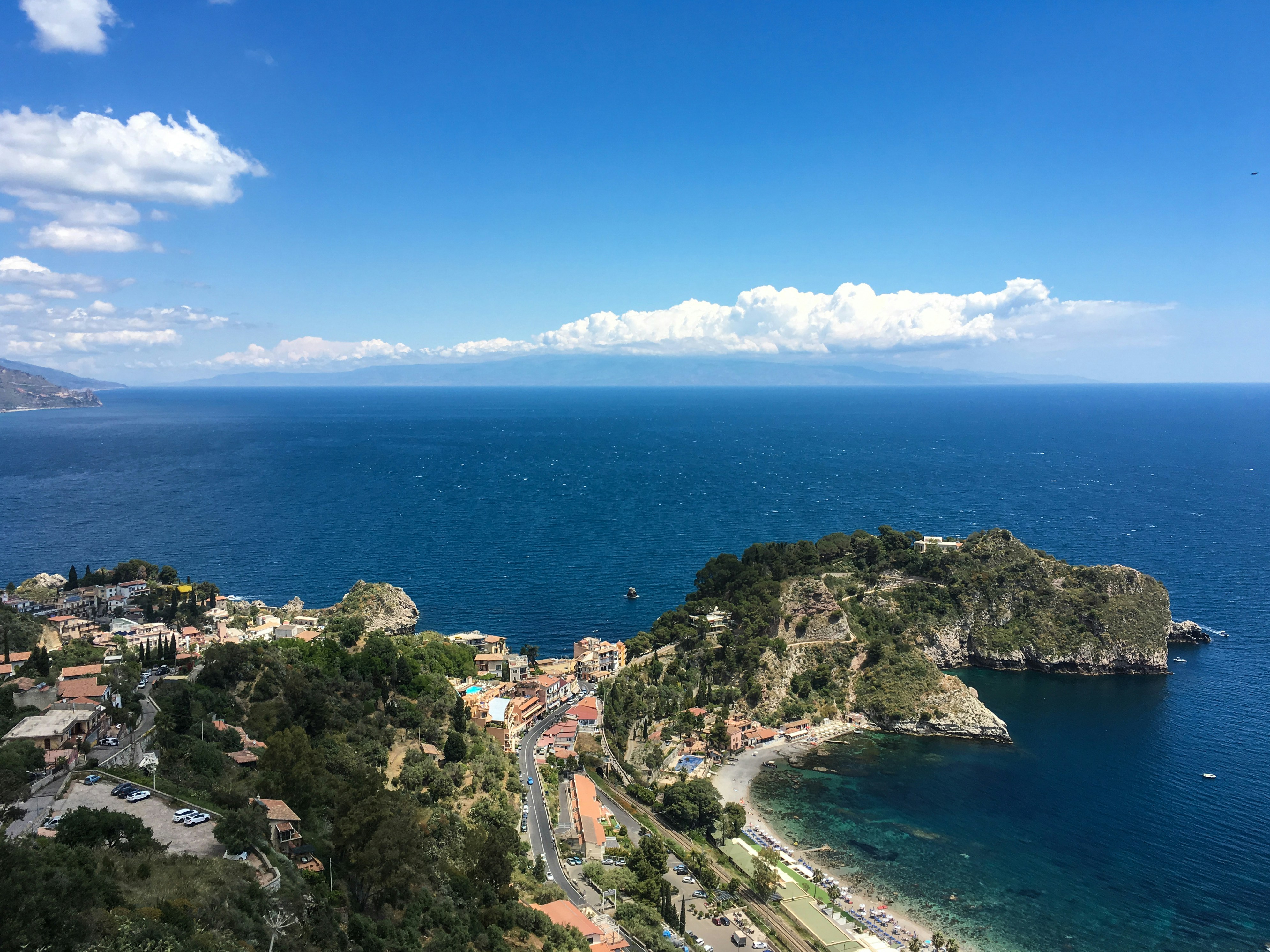
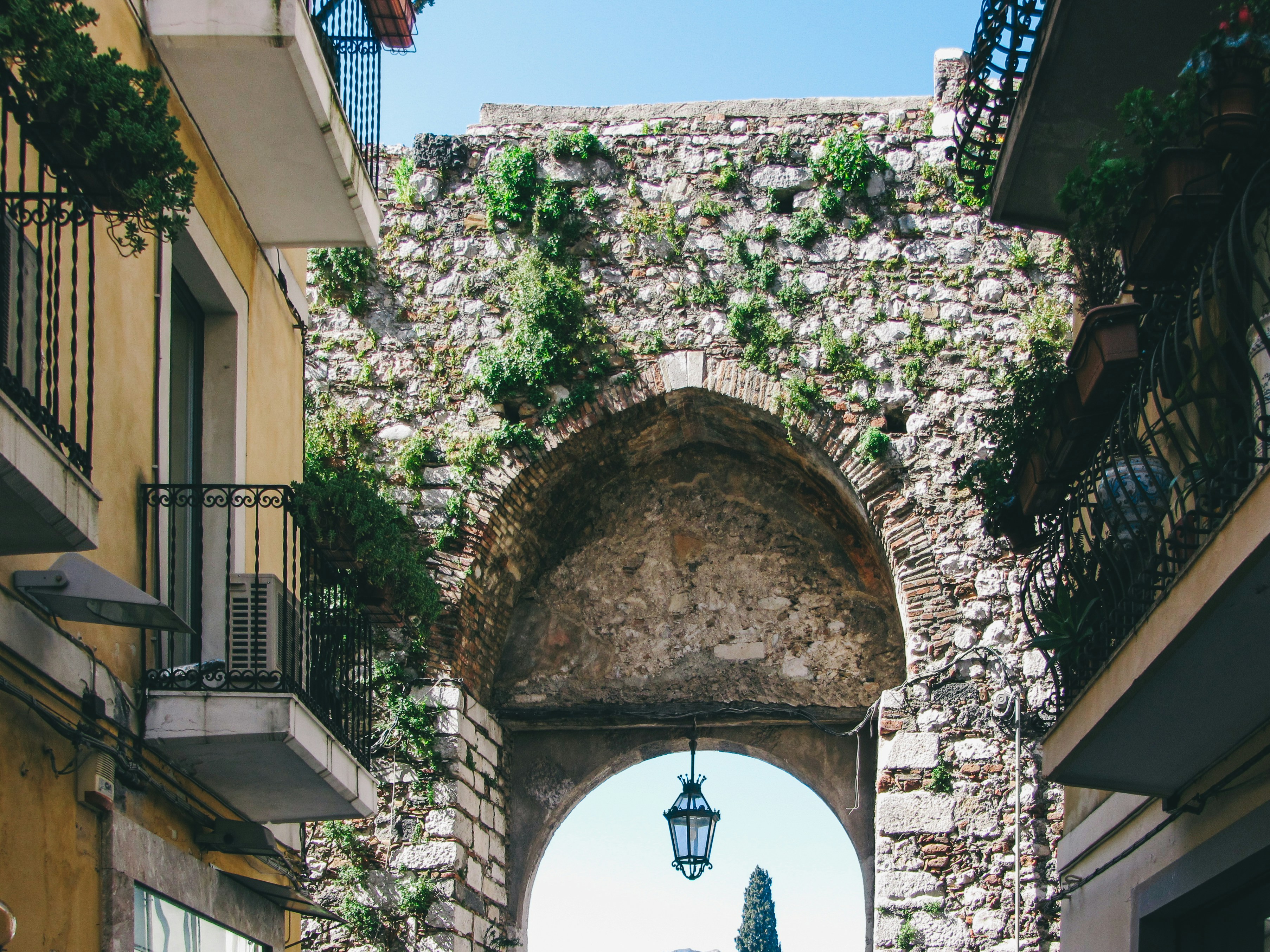
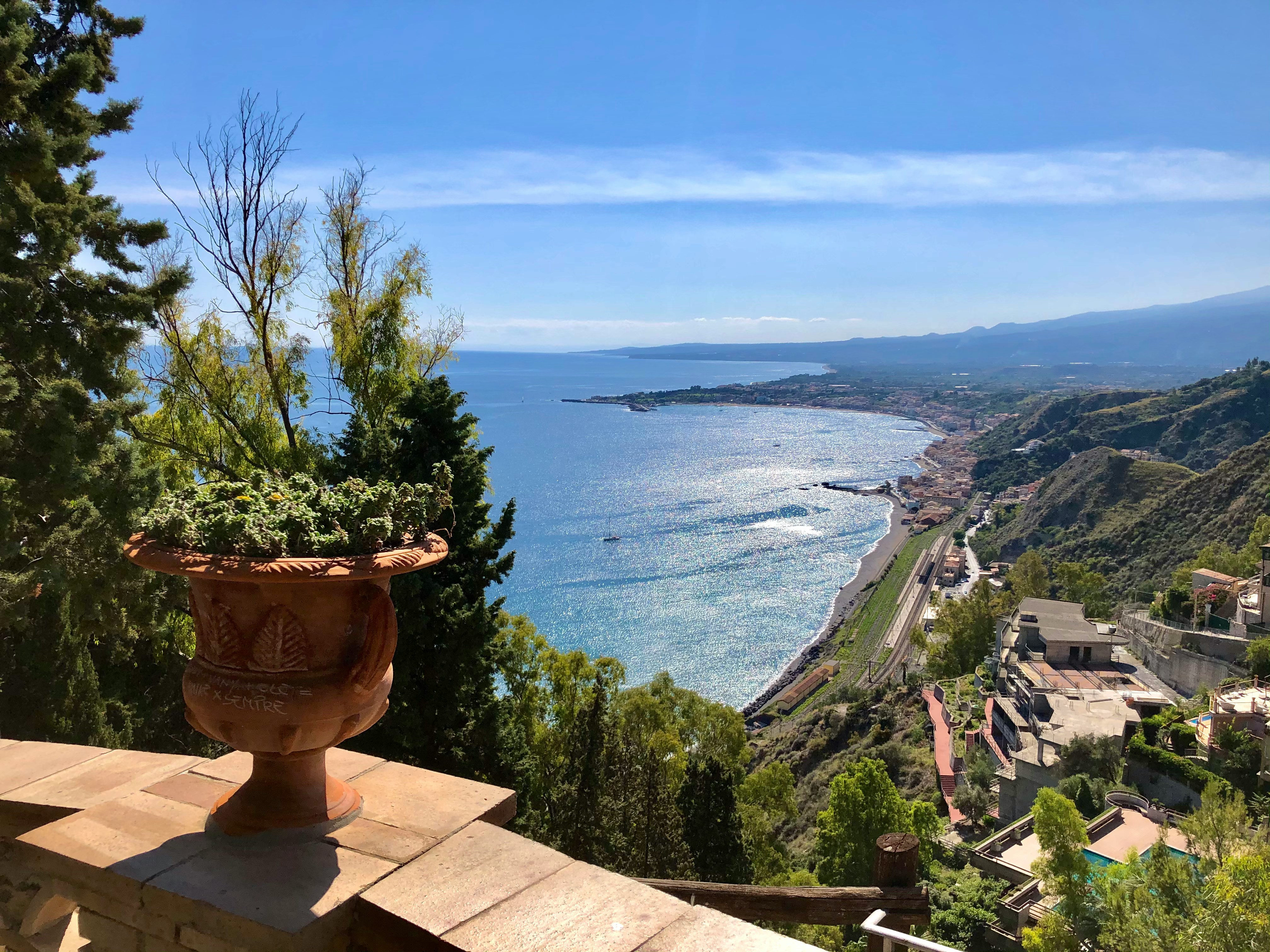
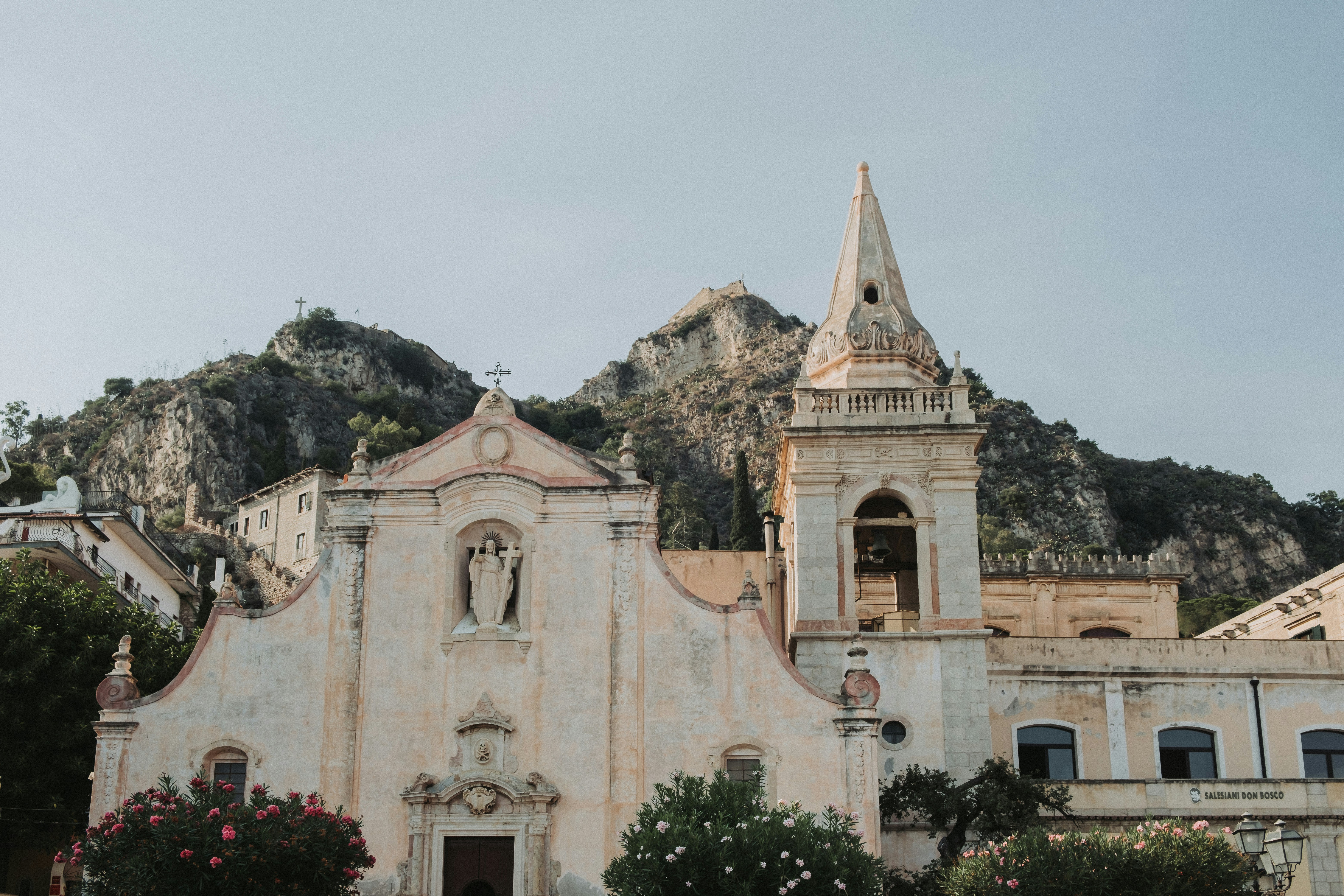
About Capri
Tour description Capri, Italy Popular since Roman times when the emperors built their villas on Capri, this island is surely one of the world's most famous and beautiful spots. Visiting Capri, it is easy to see why the ancient Romans fell in love with this place 2,000 years ago - the craggy mountains, the sea caves and grottos and the brilliantly colored flowers cast a magic spell then and still capture the admiration of today's travelers. There are sleek yachts moored in the deep blue waters of the bays, and beautiful villas and tiny villages cling to steep slopes. An excellent year-round climate and a breathtaking landscape complete the picture of a storybook island. There are two main villages - Capri Town, site of the popular meeting point "Piazzetta," and Anacapri, the upper town, dominated by 1,750-foot-high Monte Solaro, the highest point on the island. Both remain the "in" scene for international travelers. By spending millions on comfort and style, the island has ensured its continuing success. After a trip to upper-level Anacapri, visitors enjoy strolling the narrow, cobbled streets of Capri Town, browsing in chic boutiques and spending time in the Piazzetta with a drink in one of the outdoor cafés. There is a funicular from the main port of Marina Grande to Capri Town; from Anacapri, a chair lift whisks visitors to the top of Monte Solaro for a spellbinding view. The magical Blue Grotto can be reached by boat from Marina Grande, but entrance into the grotto depends for the most part on sea conditions. Please Note: For your convenience, the shore excursions offered for this port of call are available to reserve in advance at www.silversea.com until August 8 , as well as offered for purchase on board, unless otherwise noted in the description. Going Ashore in Capri Pier Information The ship is scheduled to anchor off Capri's main port, Marina Grande. Guests will be taken ashore via local tenders, arriving at the pier just a short distance from the funicular to Capri Town. Taxis and minibuses are also available near the pier area. Be sure to agree on the fare before starting out. Shopping Capri is a shopping mecca, though by no means inexpensive. Upscale shops and boutiques offer an array of jewelry, designer fashions, resort wear, straw articles and souvenir items. Start from the Piazzetta and the streets fanning out from the square. Some shops may be closed between 12:30/1:00 p.m. and 4:00/4:30 p.m. The local currency is the euro. Cuisine Capri features plenty of open-air eateries in addition to top rated restaurants. Fresh seafood and delicious pasta dishes make for a nice lunch; for a quick meal there are tempting sandwiches and pizza. You might enjoy a hearty Italian table wine with lunch. Other Sights Capri Town La Piazzetta is the main square of Capri Town located just opposite the upper funicular station. The square is an ideal place from where to start exploring or shopping. Sidewalk cafés around the square provide residents and visitors with a popular pastime - people-watching while sipping a drink or enjoying a coffee. Anacapri Reaching Capri's second town is via local minibus. In addition to numerous souvenir shops and designer boutiques, attractions include Axel Munthe's Villa San Michele and the chair lift to Monte Solaro. Blue Grotto Boat excursions to the Blue Grotto can be booked locally at Marina Grande. Be aware that it is necessary to transfer into smaller boats in front of the grotto. Also, entrance to the grotto is subject to weather and sea conditions. For this reason, tours to the Blue Grotto are frequently cancelled. Private arrangements are not available in this port.
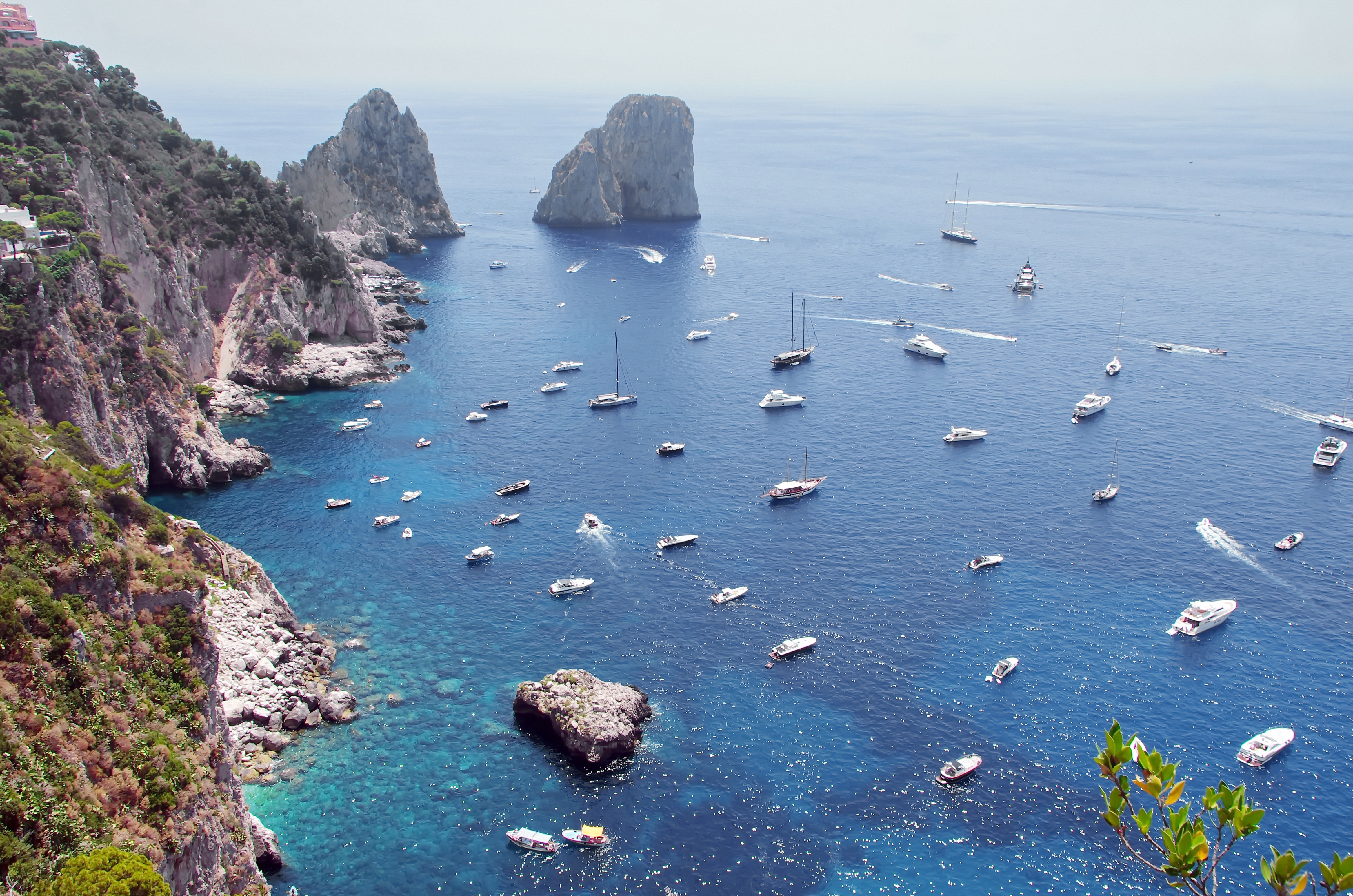
About Capri
Tour description Capri, Italy Popular since Roman times when the emperors built their villas on Capri, this island is surely one of the world's most famous and beautiful spots. Visiting Capri, it is easy to see why the ancient Romans fell in love with this place 2,000 years ago - the craggy mountains, the sea caves and grottos and the brilliantly colored flowers cast a magic spell then and still capture the admiration of today's travelers. There are sleek yachts moored in the deep blue waters of the bays, and beautiful villas and tiny villages cling to steep slopes. An excellent year-round climate and a breathtaking landscape complete the picture of a storybook island. There are two main villages - Capri Town, site of the popular meeting point "Piazzetta," and Anacapri, the upper town, dominated by 1,750-foot-high Monte Solaro, the highest point on the island. Both remain the "in" scene for international travelers. By spending millions on comfort and style, the island has ensured its continuing success. After a trip to upper-level Anacapri, visitors enjoy strolling the narrow, cobbled streets of Capri Town, browsing in chic boutiques and spending time in the Piazzetta with a drink in one of the outdoor cafés. There is a funicular from the main port of Marina Grande to Capri Town; from Anacapri, a chair lift whisks visitors to the top of Monte Solaro for a spellbinding view. The magical Blue Grotto can be reached by boat from Marina Grande, but entrance into the grotto depends for the most part on sea conditions. Please Note: For your convenience, the shore excursions offered for this port of call are available to reserve in advance at www.silversea.com until August 8 , as well as offered for purchase on board, unless otherwise noted in the description. Going Ashore in Capri Pier Information The ship is scheduled to anchor off Capri's main port, Marina Grande. Guests will be taken ashore via local tenders, arriving at the pier just a short distance from the funicular to Capri Town. Taxis and minibuses are also available near the pier area. Be sure to agree on the fare before starting out. Shopping Capri is a shopping mecca, though by no means inexpensive. Upscale shops and boutiques offer an array of jewelry, designer fashions, resort wear, straw articles and souvenir items. Start from the Piazzetta and the streets fanning out from the square. Some shops may be closed between 12:30/1:00 p.m. and 4:00/4:30 p.m. The local currency is the euro. Cuisine Capri features plenty of open-air eateries in addition to top rated restaurants. Fresh seafood and delicious pasta dishes make for a nice lunch; for a quick meal there are tempting sandwiches and pizza. You might enjoy a hearty Italian table wine with lunch. Other Sights Capri Town La Piazzetta is the main square of Capri Town located just opposite the upper funicular station. The square is an ideal place from where to start exploring or shopping. Sidewalk cafés around the square provide residents and visitors with a popular pastime - people-watching while sipping a drink or enjoying a coffee. Anacapri Reaching Capri's second town is via local minibus. In addition to numerous souvenir shops and designer boutiques, attractions include Axel Munthe's Villa San Michele and the chair lift to Monte Solaro. Blue Grotto Boat excursions to the Blue Grotto can be booked locally at Marina Grande. Be aware that it is necessary to transfer into smaller boats in front of the grotto. Also, entrance to the grotto is subject to weather and sea conditions. For this reason, tours to the Blue Grotto are frequently cancelled. Private arrangements are not available in this port.

About Amalfi
At first glance, it's hard to imagine that this resort destination was one of the world's great naval powers, and a sturdy rival of Genoa and Pisa for control of the Mediterranean in the 11th and 12th centuries. Once the seat of the Amalfi Maritime Republic, the town is set in a verdant valley of the Lattari Mountains, with cream-colored and pastel-hued buildings tightly packing a gorge on the Bay of Salerno. The harbor, which once launched the greatest fleet in Italy, now bobs with ferries and blue-and-white fishing boats. The main street, lined with shops and pasticcerie, has replaced a raging mountain torrent, and terraced hills flaunt the green and gold of lemon groves. Bearing testimony to its great trade with Tunis, Tripoli, and Algiers, Amalfi remains honeycombed with Arab-Sicilian cloisters and covered passages. In a way Amalfi has become great again, showing off its medieval glory days with sea pageants, convents-turned-hotels, ancient paper mills, covered streets, and its glimmering cathedral.
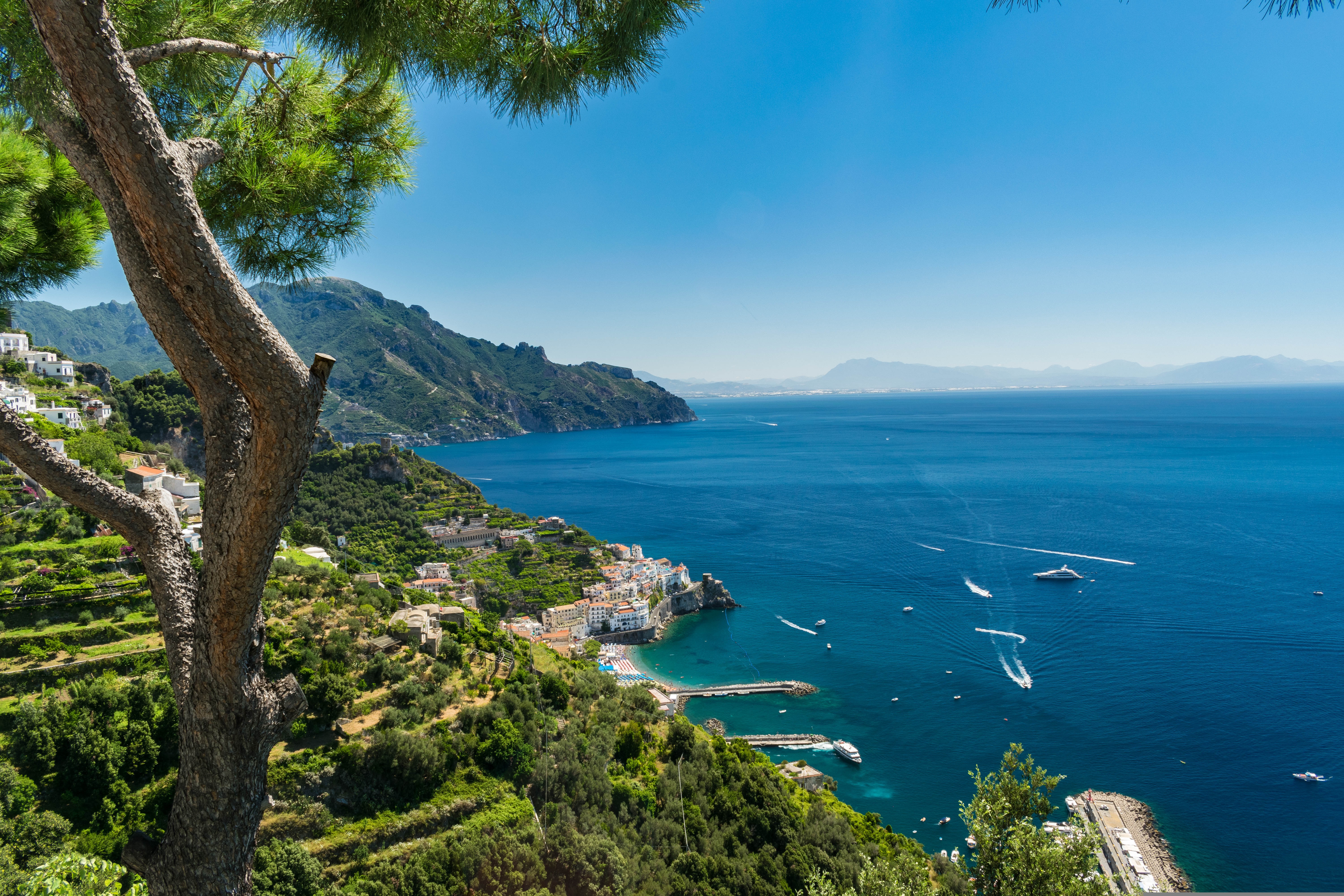

About Civitavecchia
Italy's vibrant capital lives in the present, but no other city on earth evokes its past so powerfully. For over 2,500 years, emperors, popes, artists, and common citizens have left their mark here. Archaeological remains from ancient Rome, art-stuffed churches, and the treasures of Vatican City vie for your attention, but Rome is also a wonderful place to practice the Italian-perfected il dolce far niente, the sweet art of idleness. Your most memorable experiences may include sitting at a caffè in the Campo de' Fiori or strolling in a beguiling piazza.



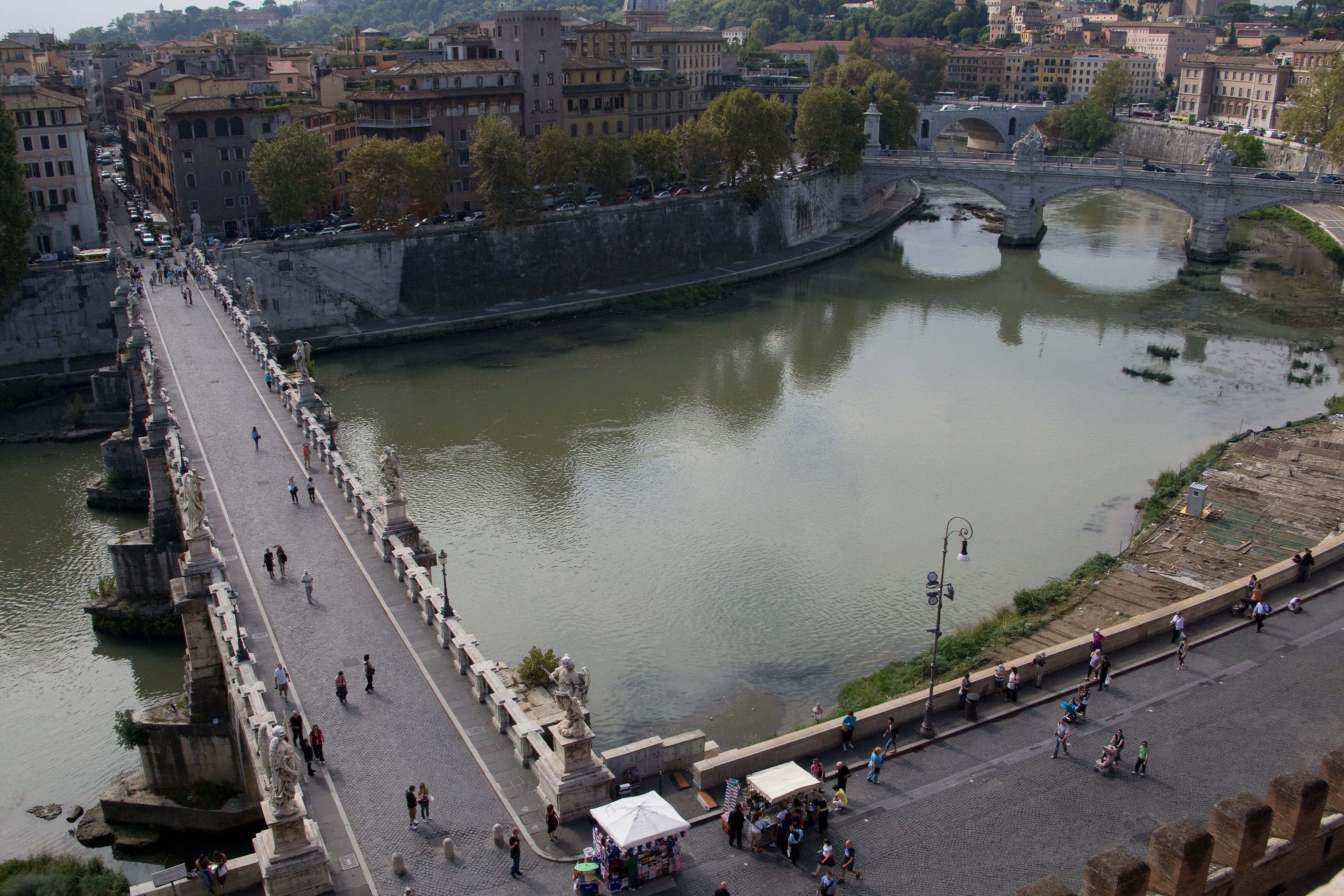
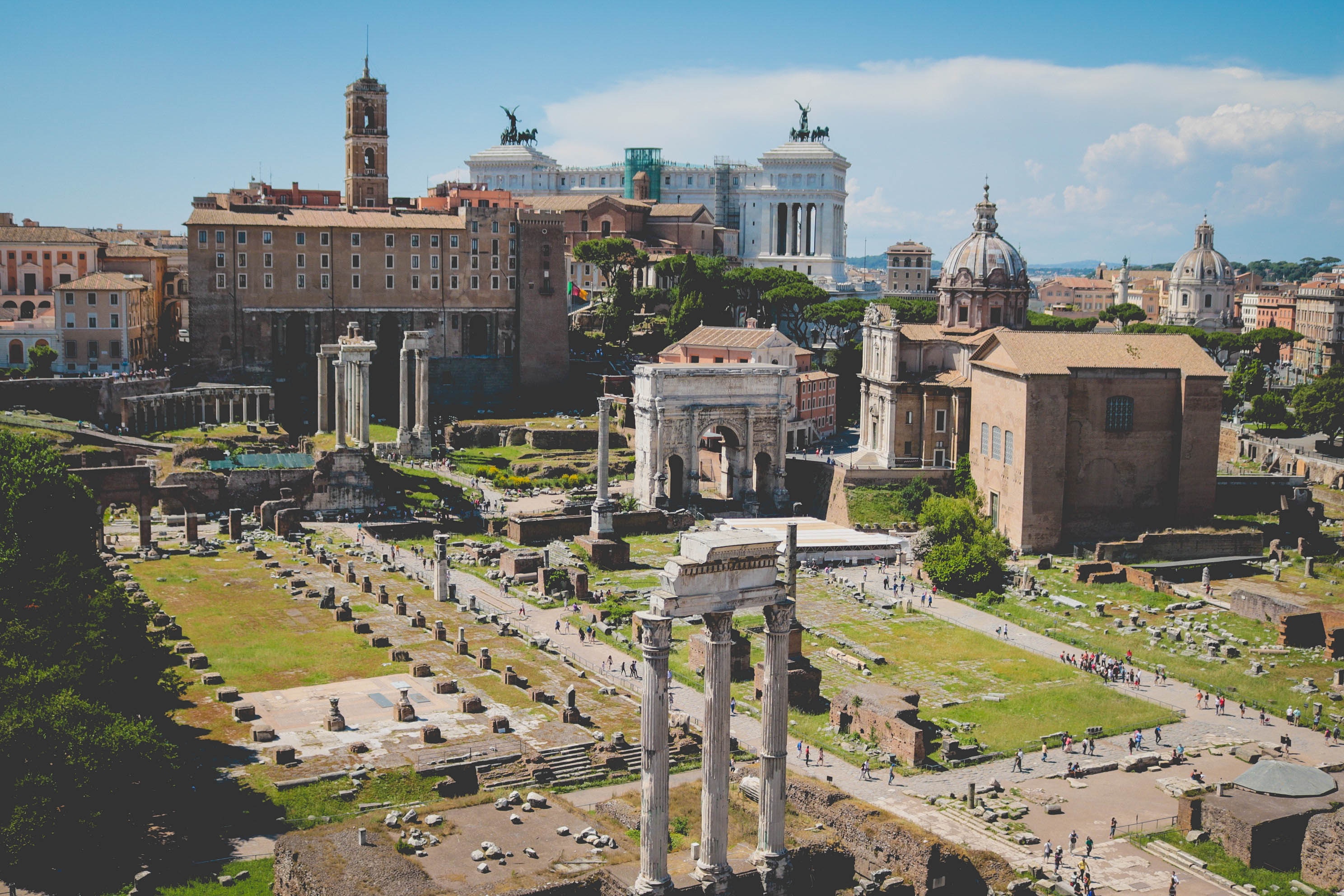
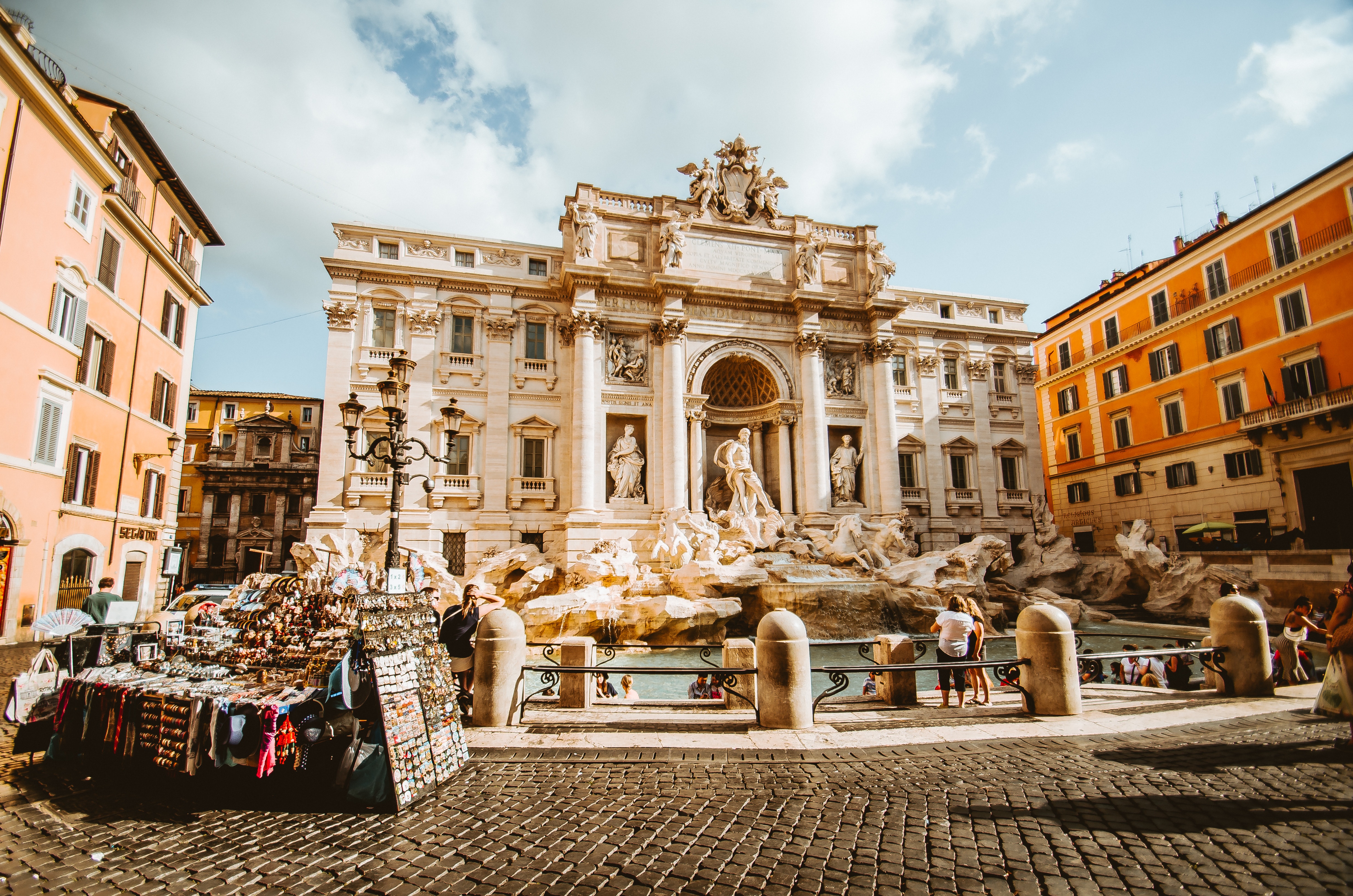


This premium suite (447 sq. ft. / 41.53 sq. meters) includes a thoughtfully appointed separate master bedroom with a permanent queen size bed and a flat-screen TV. The suite features a large master bathroom with a massage shower and a separate soaking tub with views of the sea. A spacious living area with a flat-screen TV, writing desk, and ½ guest bath. There is also a dining area suitable for hosting your friends and family. The Owner’s Suite is suite number 315 on both yachts, located mid-ship on Deck 3 – Close to the pool (aft, deck 3).
Additional Amenities:
- Well-stocked beverage refrigerator
- 2 – 55″ flat-screen TVs with “Infotainment”
- Nespresso® coffee machine
- Direct-dial telephone
- Safe
- Climate Control
- Make-Up Mirror
- Elm Organics bath amenities
- Hair dryer
- Superior Belgian bed & bath linens
- Luxury Bath Robes & Slippers
- Wooden & Padded Silk clothes hangers
- 24-hour in-stateroom “Small Bites” menu
- Wifi Available
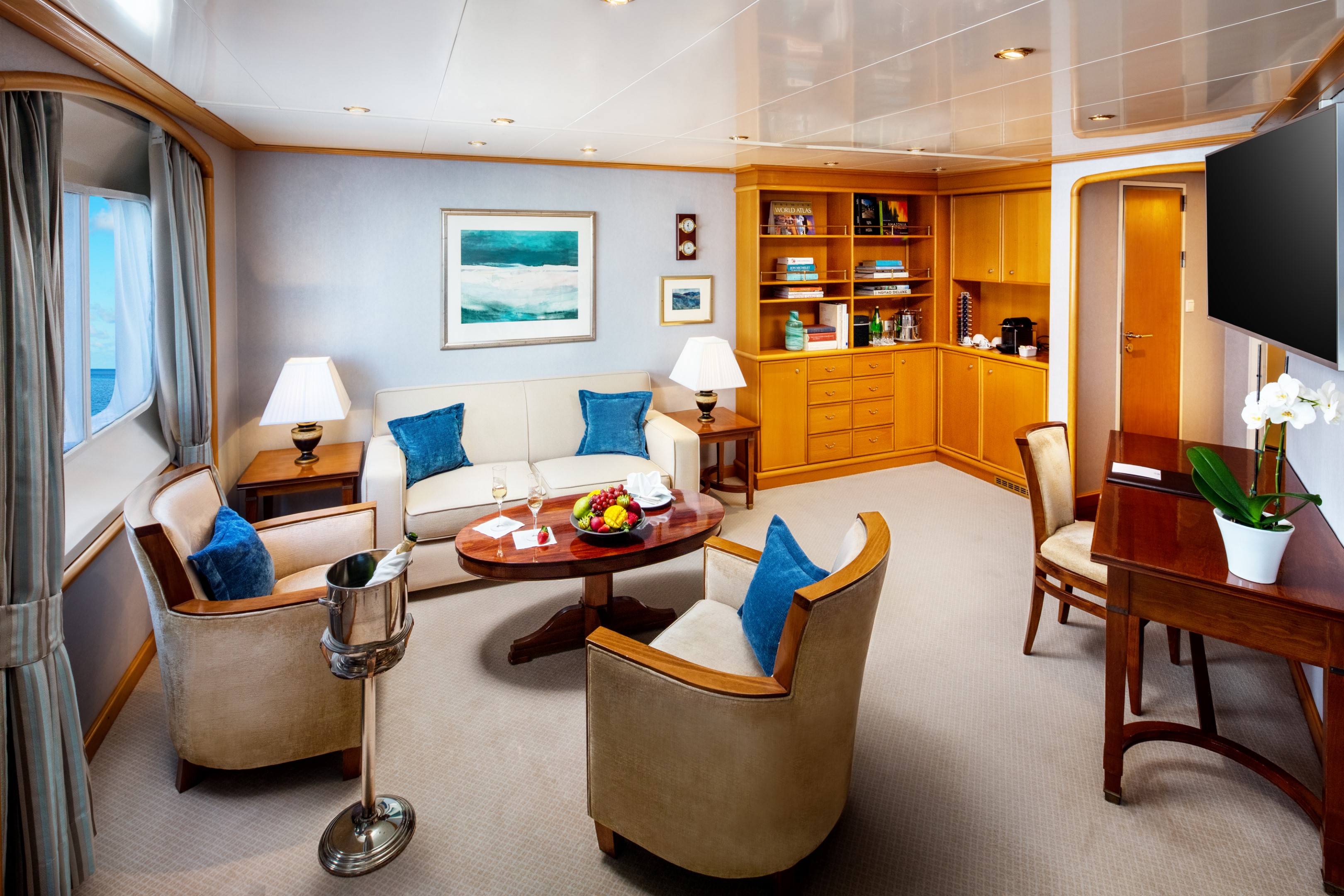
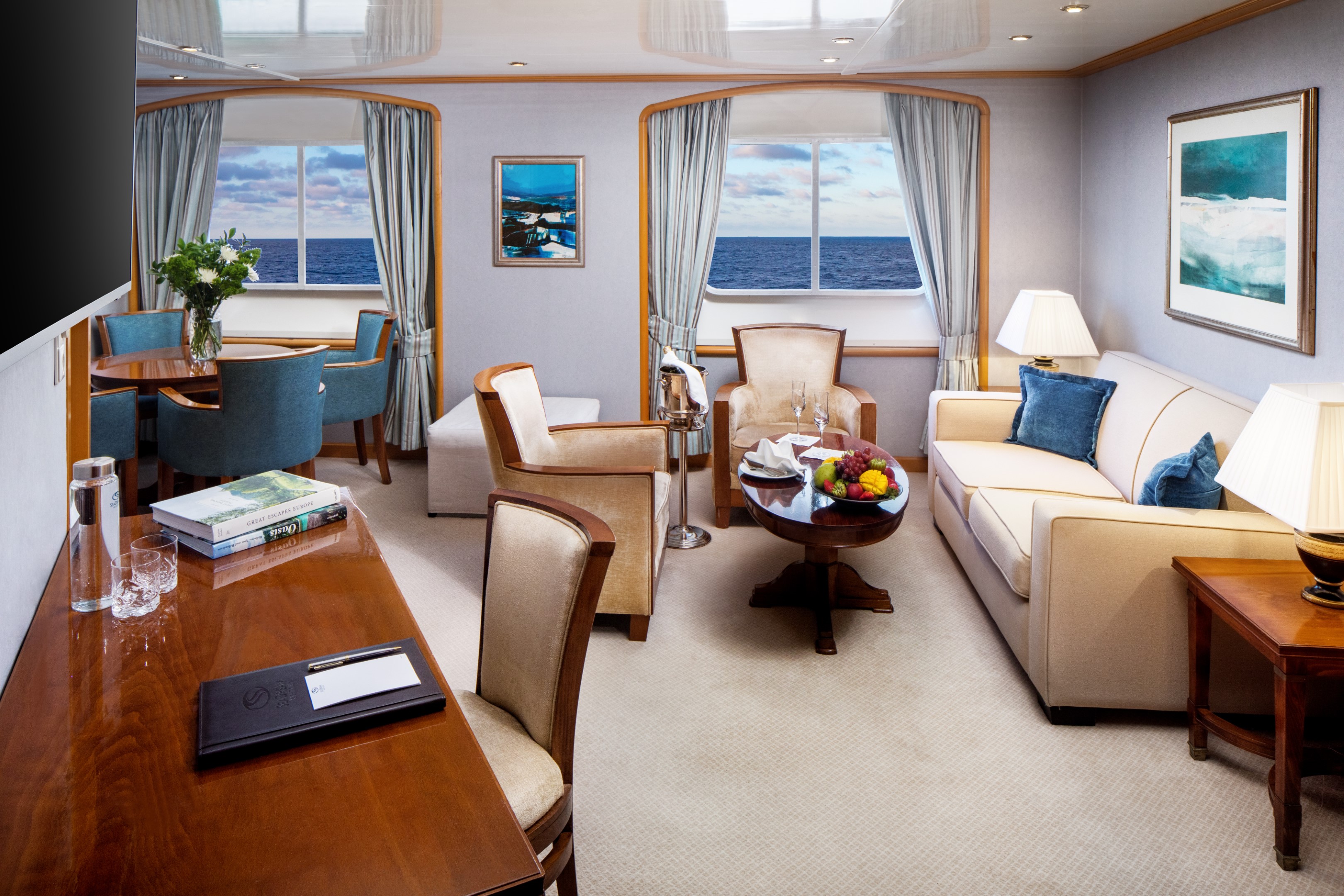
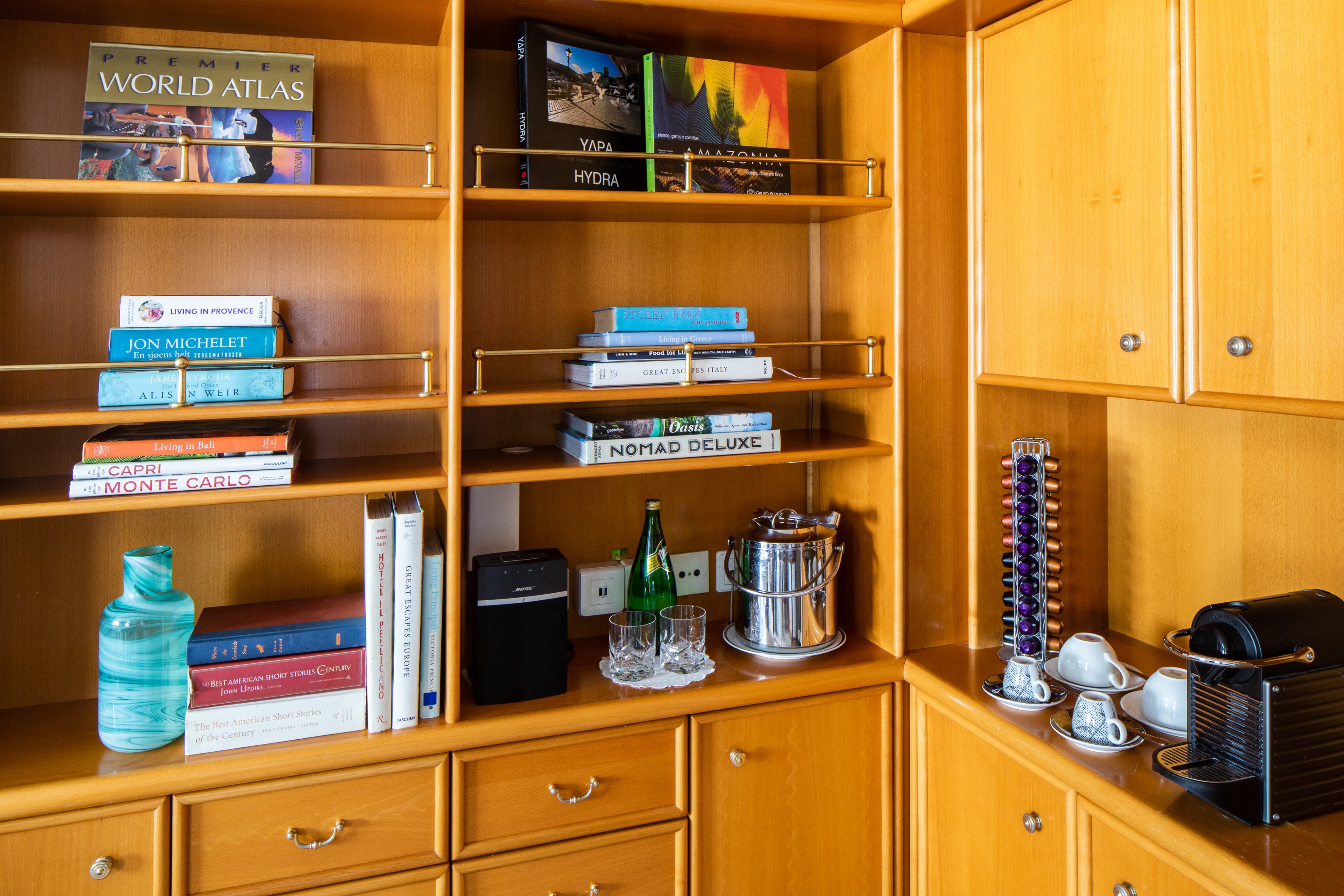
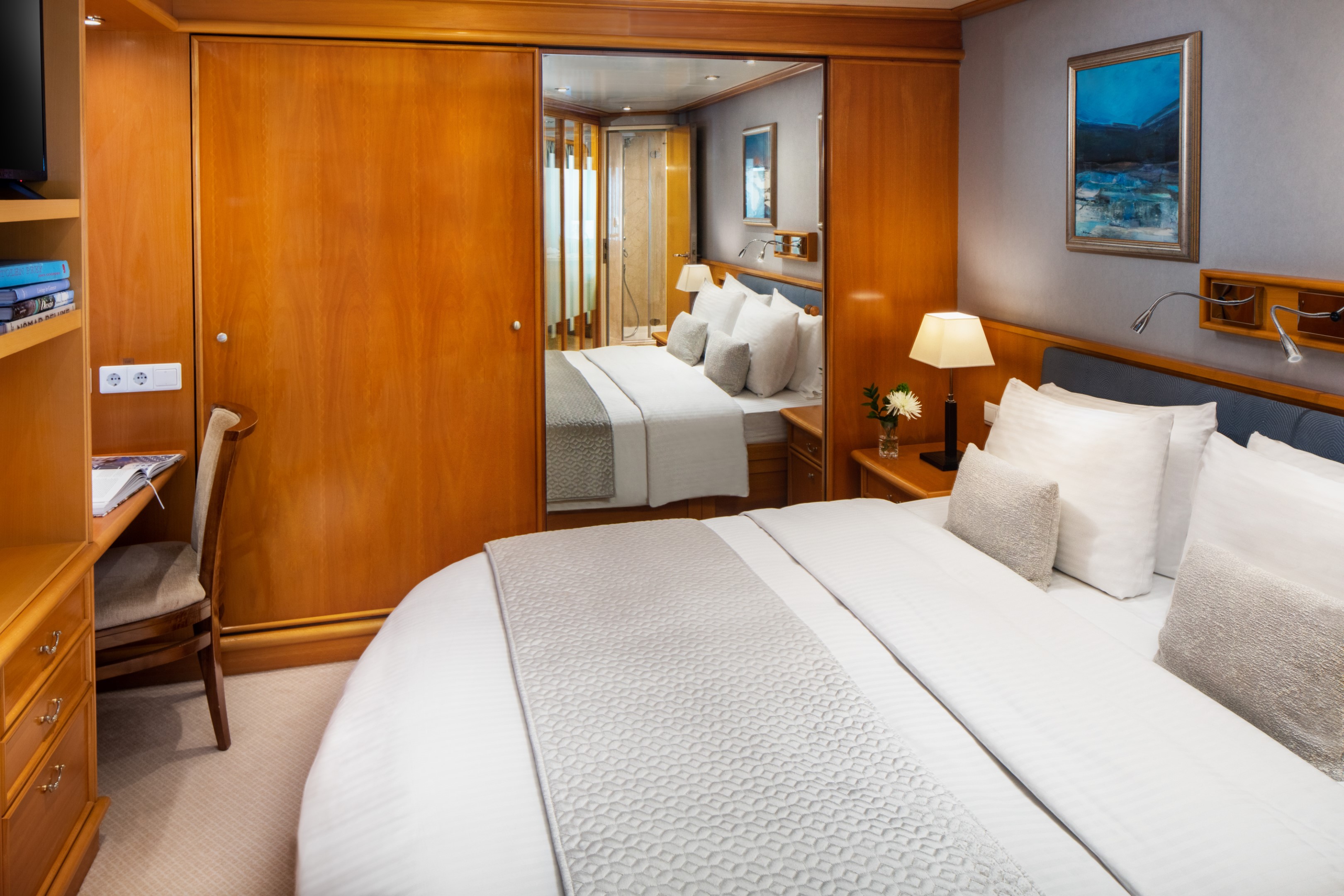
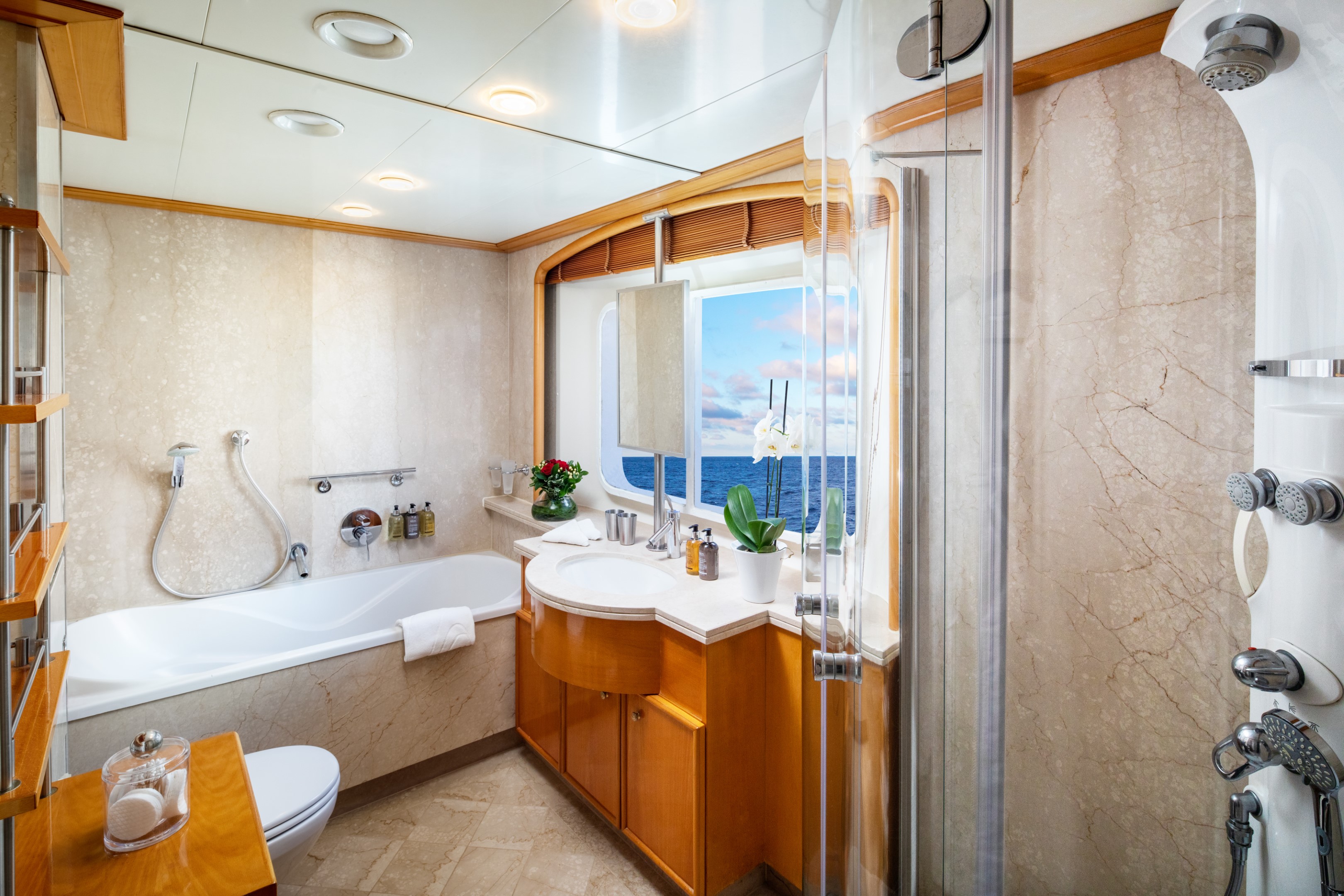

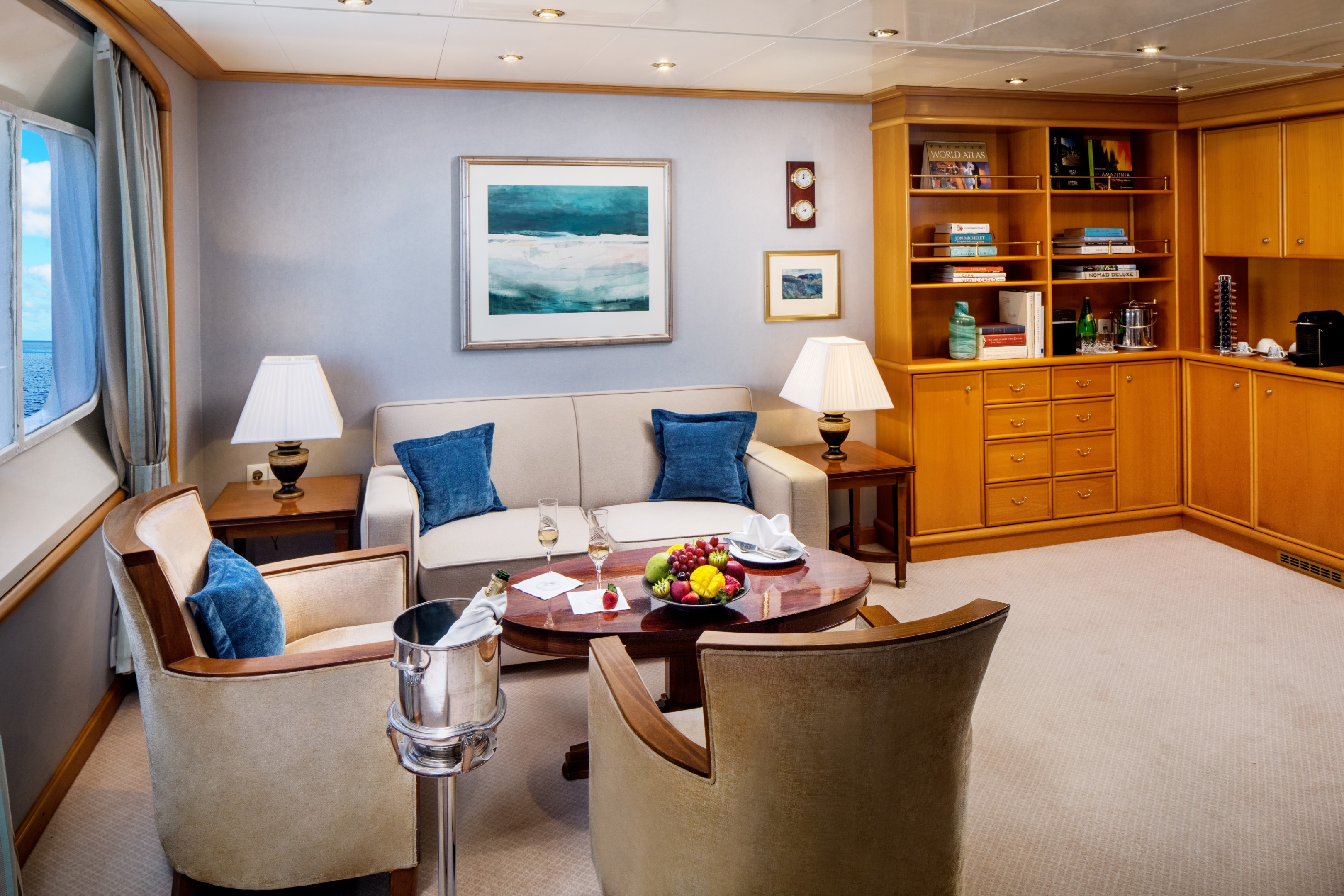
Enjoy 375 sq. ft. / 34.8 sq. meters of living space with ocean views from a total of 3 picture windows. Partitioned living and dining areas with ½ guest bath and closet. Separate and private en-suite master bedroom with permanent queen bed and closet. Marble-lined bathroom with multi-jet shower and soaking tub. Built-in dresser with writing desk. The Admiral Suite is Suite 400 on both yachts and is near the Library.
Additional Amenities:
- Well-stocked beverage refrigerator
- 2 – 55″ flat-screen TVs with “Infotainment”
- Nespresso® coffee machine
- Direct-dial telephone
- Safe
- Climate Control
- Make-Up Mirror
- Elm Organics bath amenities
- Hair dryer
- Superior Belgian bed & bath linens
- Luxury Bath Robes & Slippers
- Wooden & Padded Silk clothes hangers
- 24-hour in-stateroom “Small Bites” menu
- Wifi Available
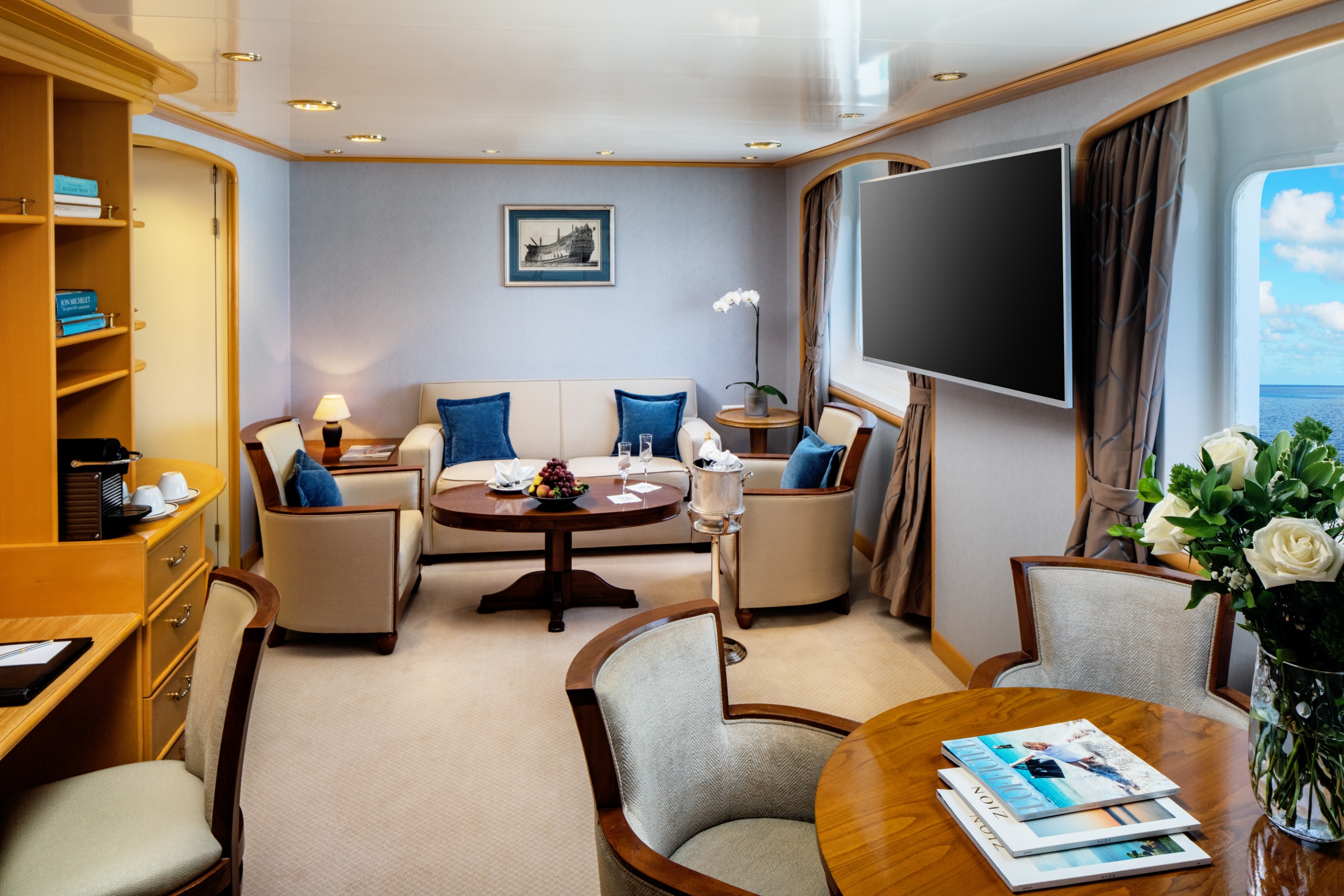
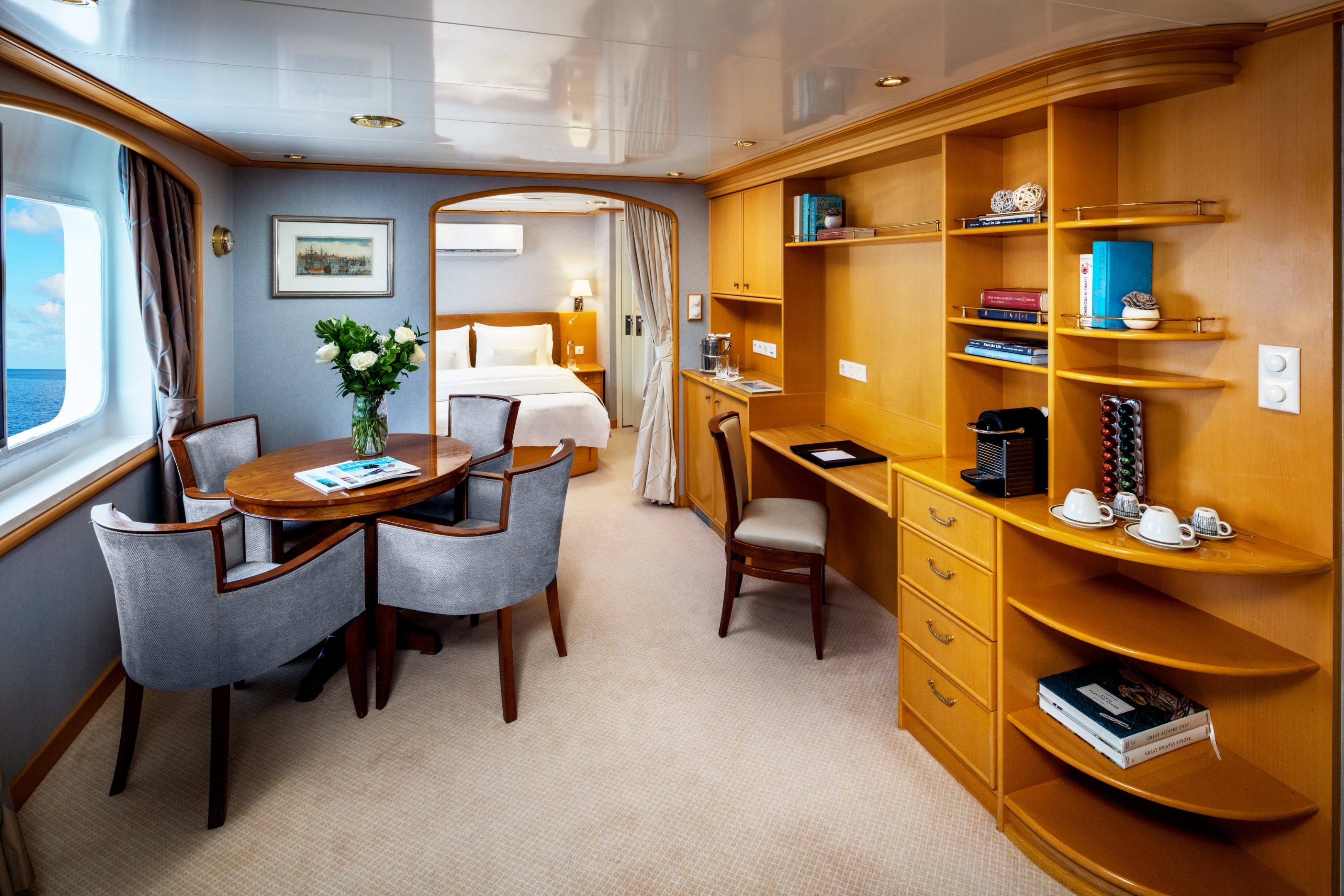
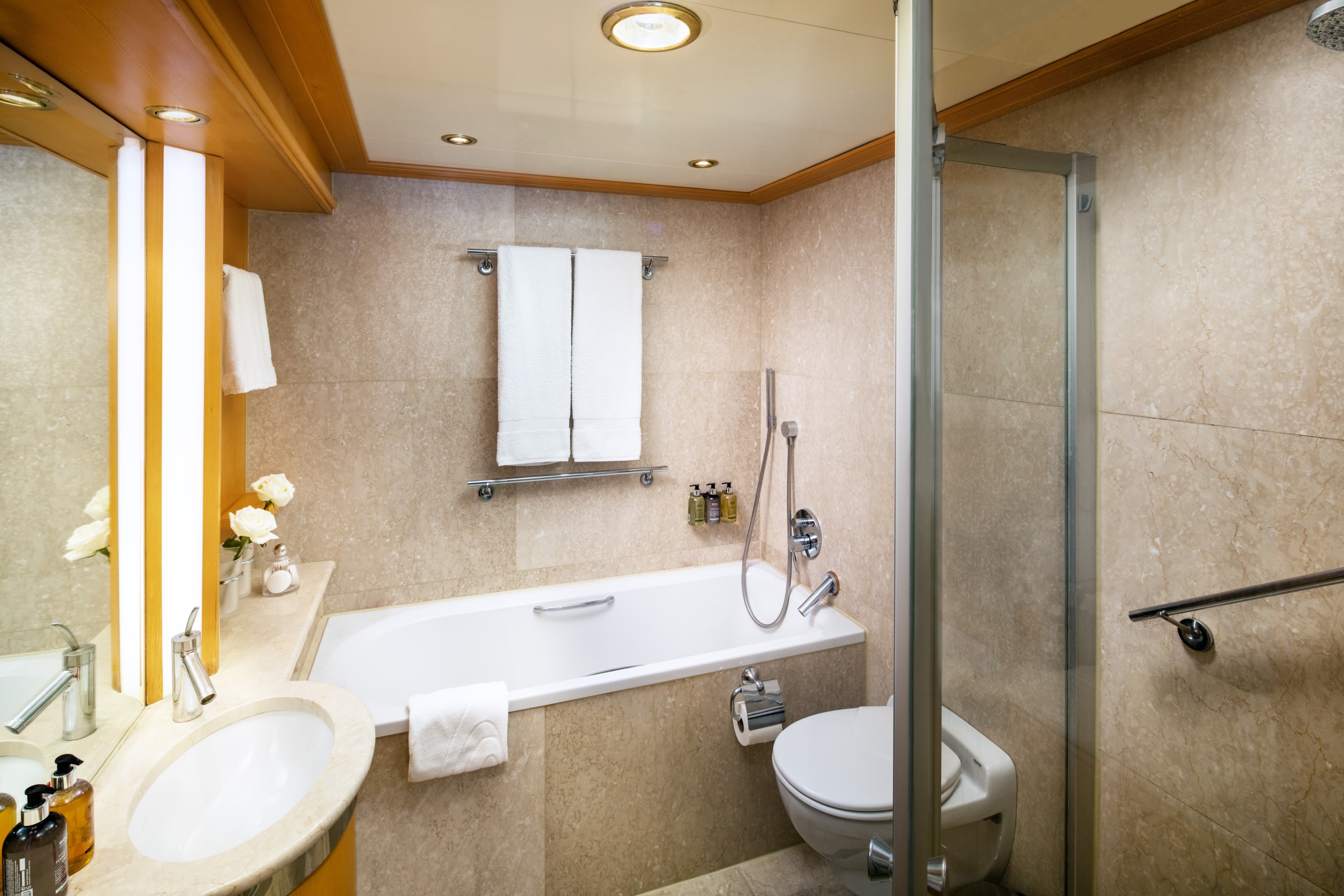
We combine two Yacht Club Staterooms to create a beautiful and spacious Commodore Suite. These comfortably appointed ocean-view suites provide a choice of two twin beds or a queen-size bed, two full marble-lined bathrooms with multi-jet showers, a seating area with sofa, coordinated chair and cocktail table, 2 spacious closets, and built-in dressers with writing desk. Configuration allows for either an additional permanent queen bed or dining area. There are eight possible Commodore Suites and they average 390 spacious sq. ft. / 36.23 sq. meters. Commodore Suites on Deck 2 feature four (4) 17” round windows instead of 2 picture windows found in Deck 3 Commodore Suites. Deck 3 Commodore Suites are close to the Pool and Main Salon.
Additional Amenities:
- Well-stocked beverage refrigerator
- 2 – 55″ flat-screen TVs with “Infotainment”
- Direct-dial telephone
- Safe
- Climate Control
- Make-Up Mirror
- Hair dryer
- Elm Organics bath amenities
- Superior Belgian bed & bath linens
- Luxury Bath Robes & Slippers
- Wooden & Padded Silk clothes hangers
- 24-hour in-stateroom “Small Bites” menu
- Wifi Available
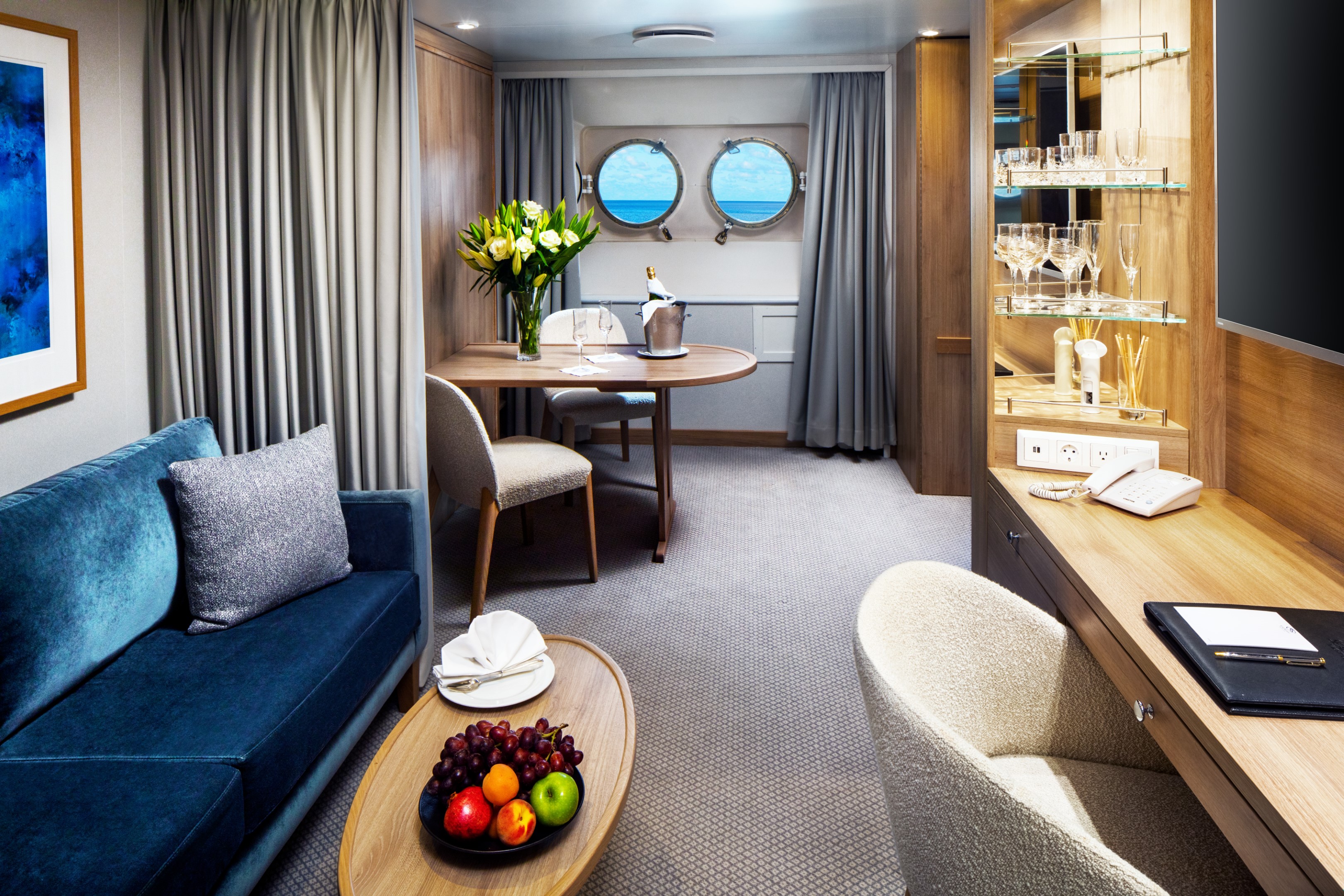
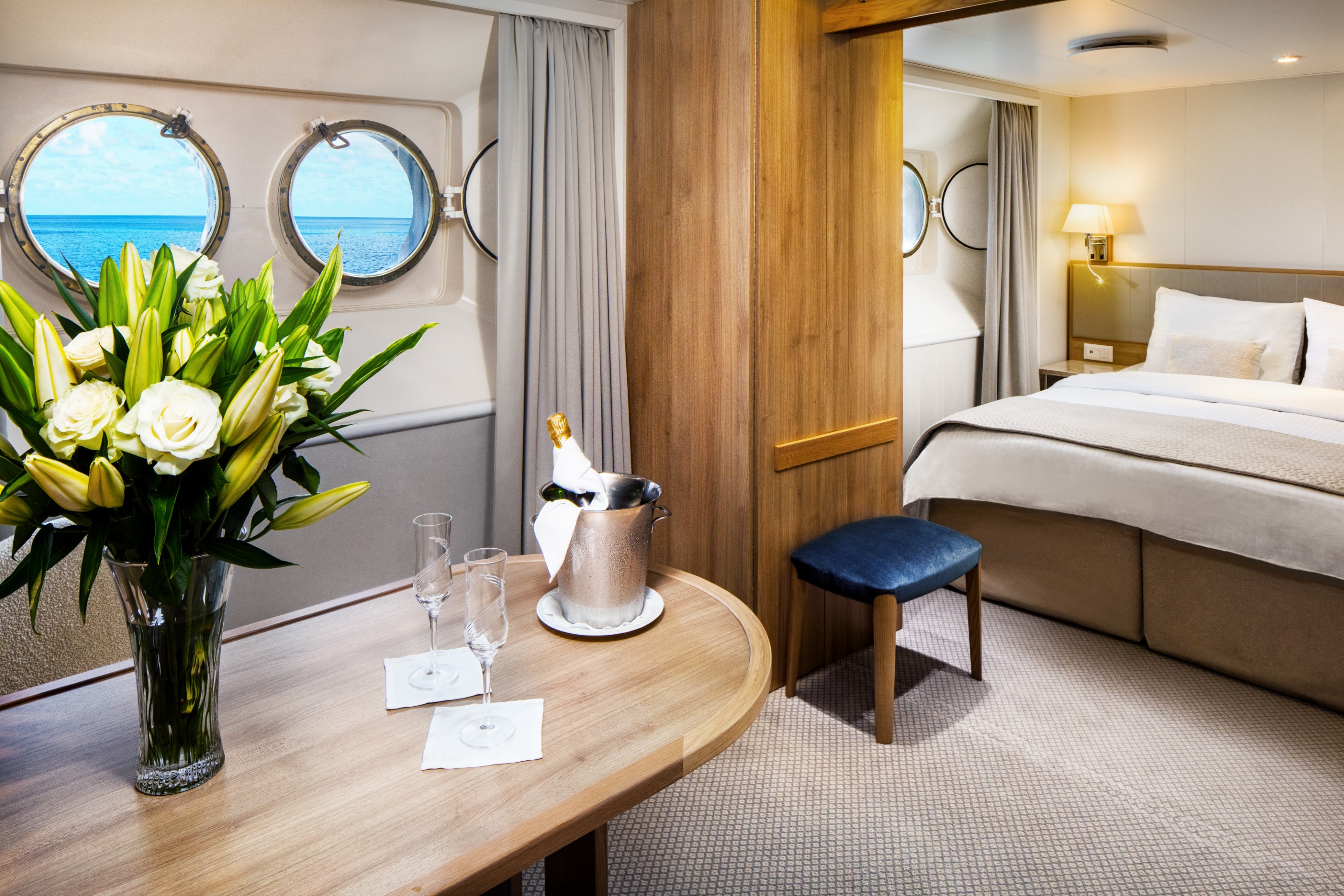
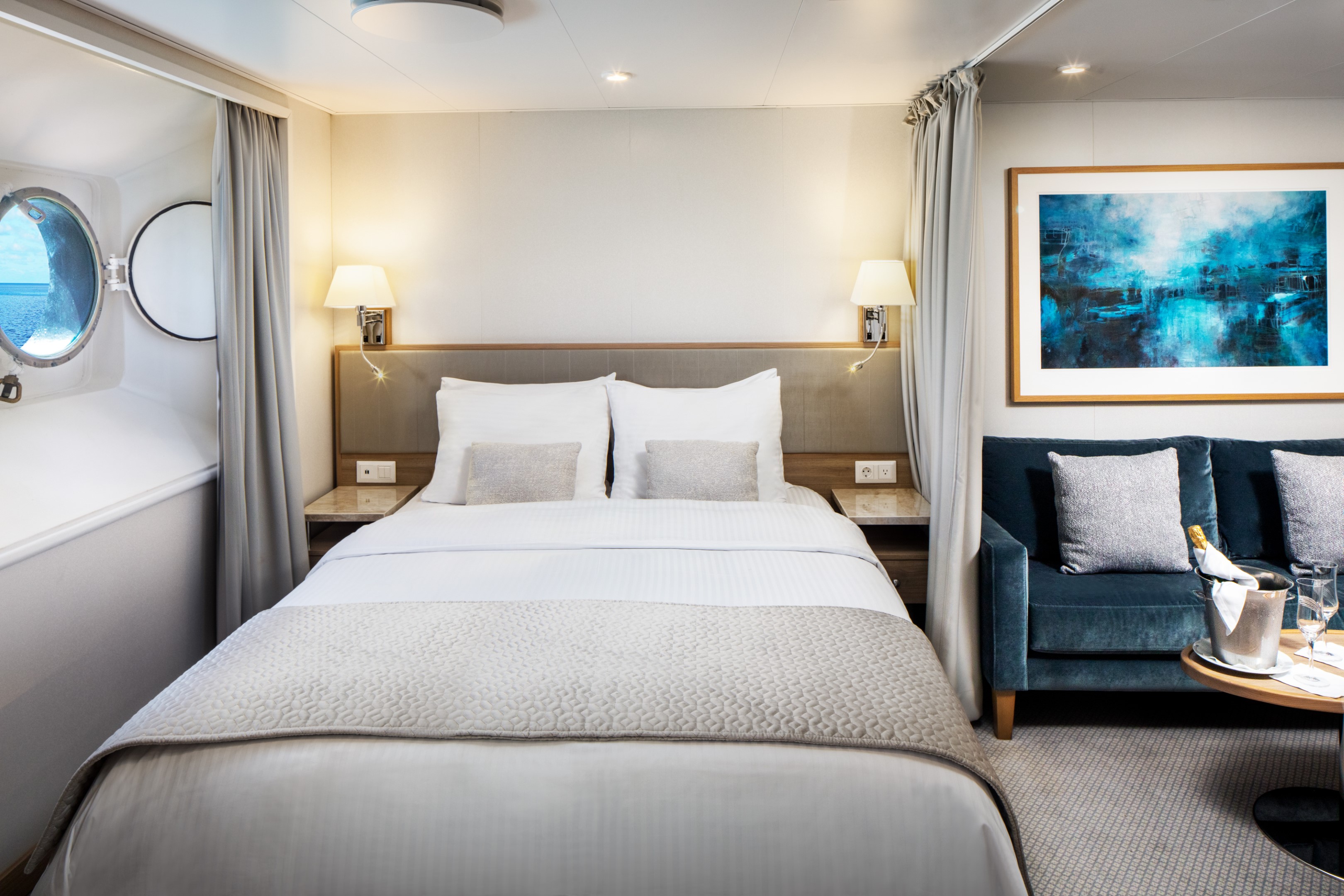
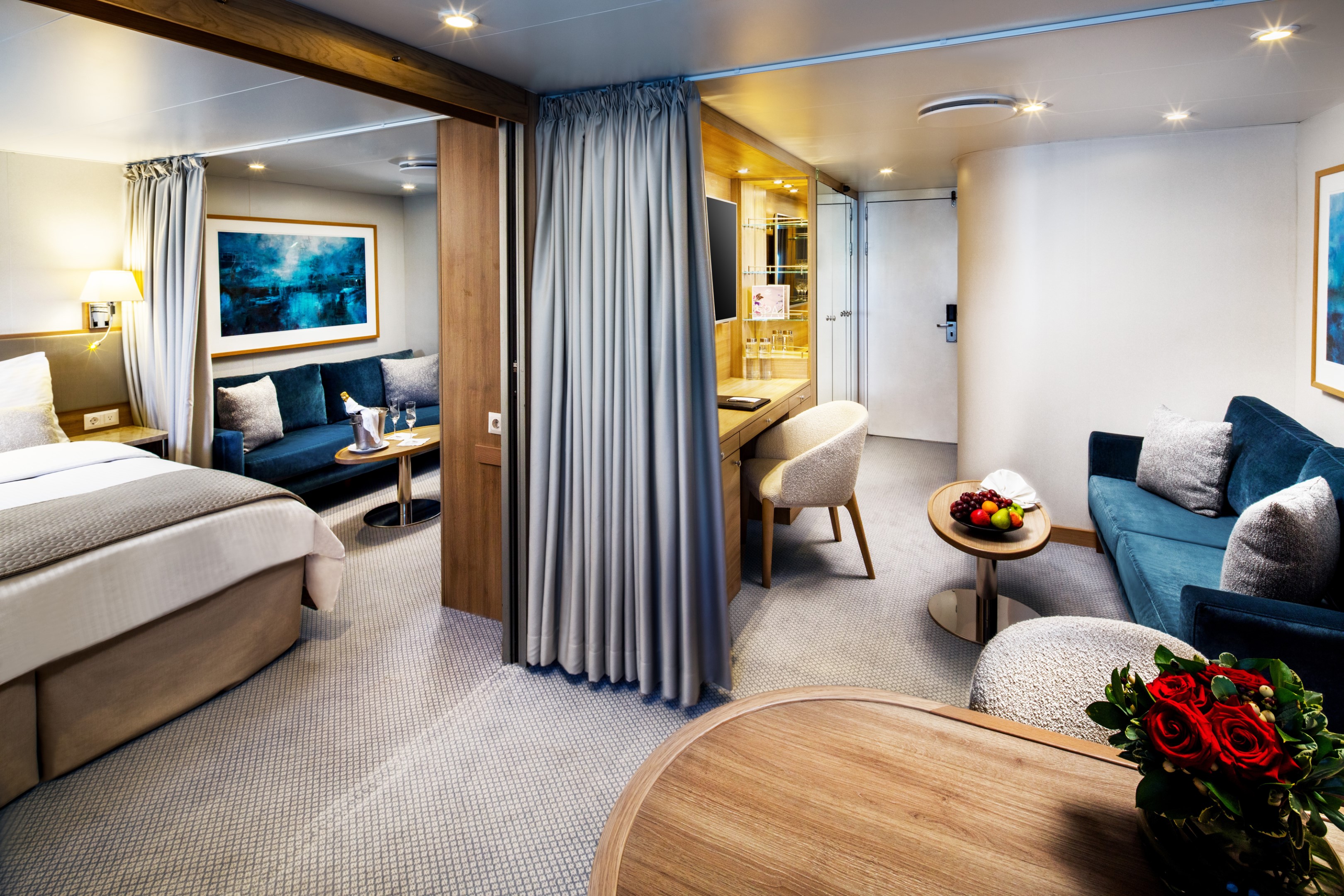
Yacht Club Deck 3 & 4 staterooms average 195 sq.ft./18.12 sq. meters. These picture window ocean view staterooms include a marble-lined bathroom in select staterooms with a multi-jet shower and a well-appointed open living area with sofa, chair, cocktail table, and built-in dresser with writing desk. Most staterooms offer a choice of 2 twin beds or 1 queen bed. Please contact the reservations team to confirm your choice. Deck 4 staterooms enjoy close proximity to the SeaDream Spa, Fitness Centre, and Library. Deck 3 is the perfect location for guests who desire to be just feet from the pool.
Additional Amenities:
- Well-stocked beverage refrigerator
- 55″ flat-screen TV with “Infotainment”
- Direct-dial telephone
- Safe
- Climate Control
- Make-Up Mirror
- Hair dryer
- Elm Organics bath amenities
- Superior Belgian bed & bath linens
- Luxury Bath Robes & Slippers
- Wooden & Padded Silk clothes hangers
- 24-hour in-stateroom “Small Bites” menu
- Wifi Available
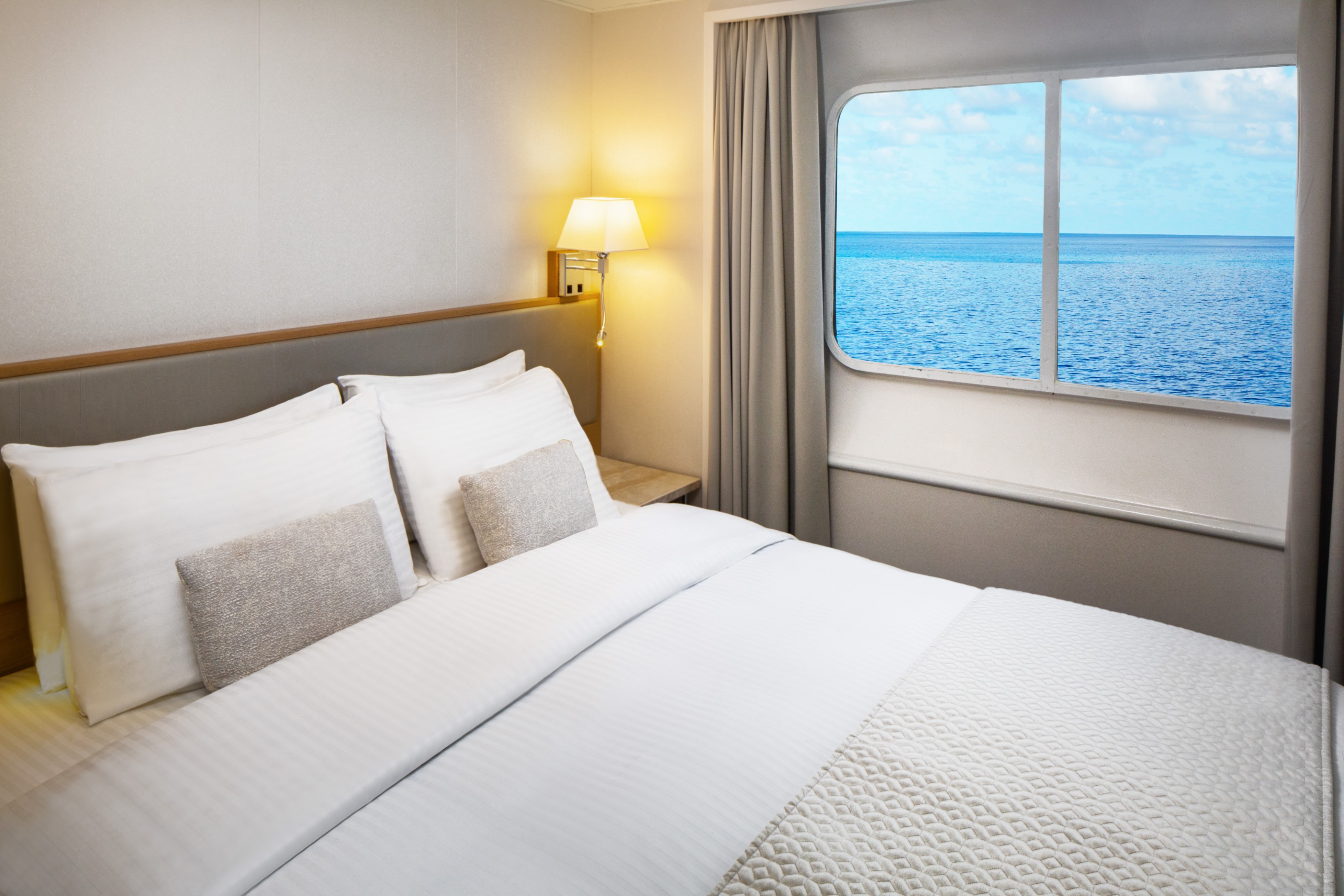
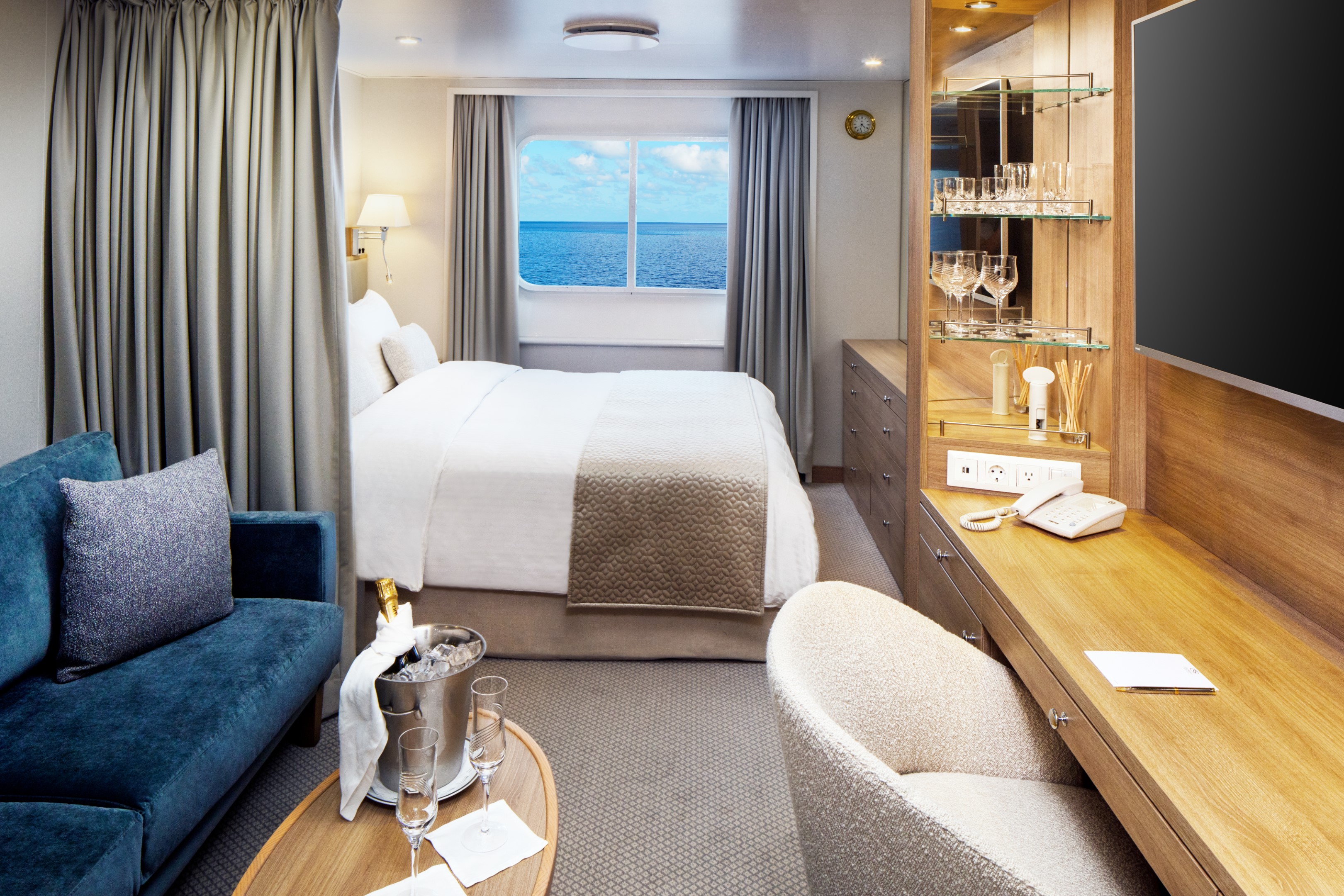
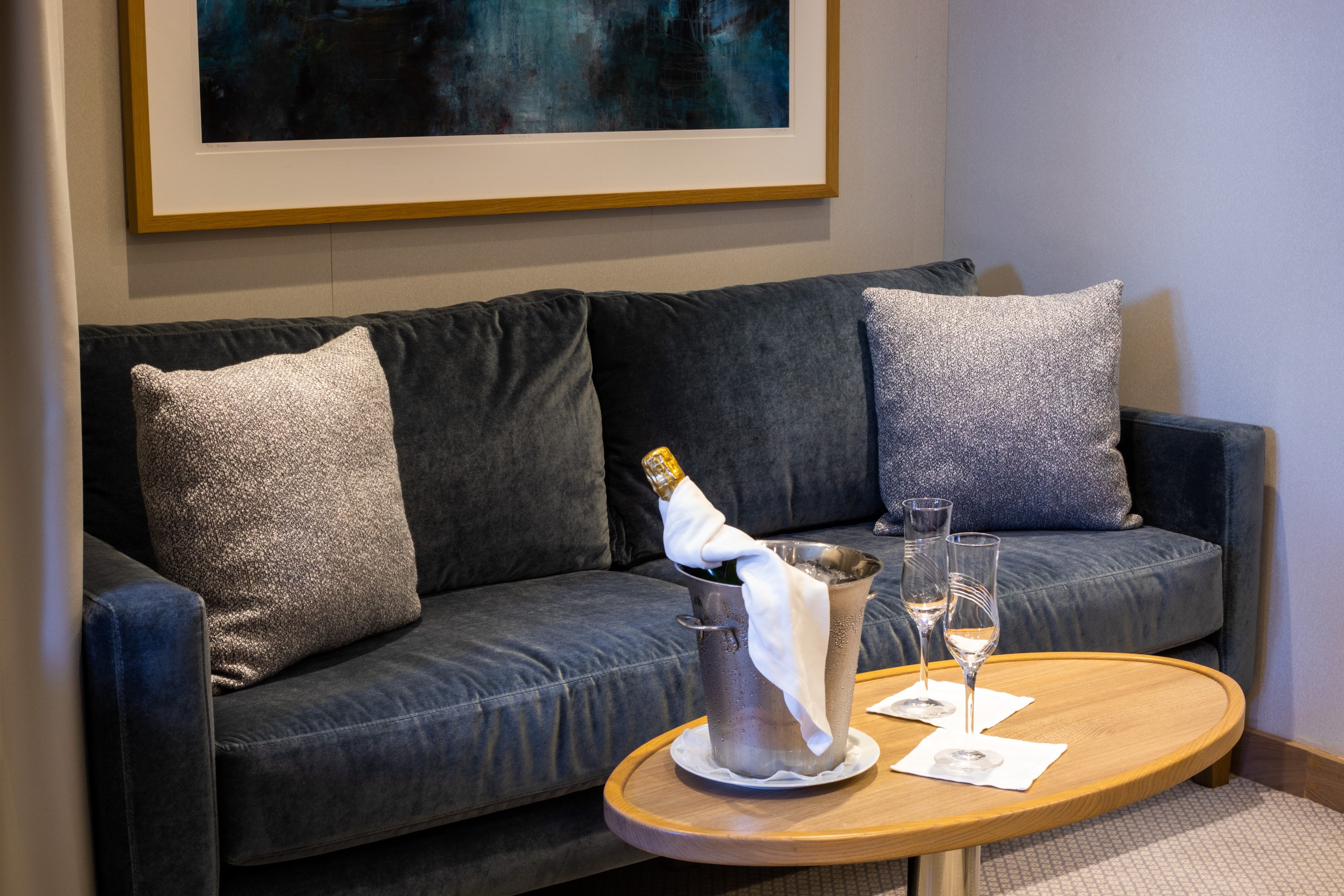
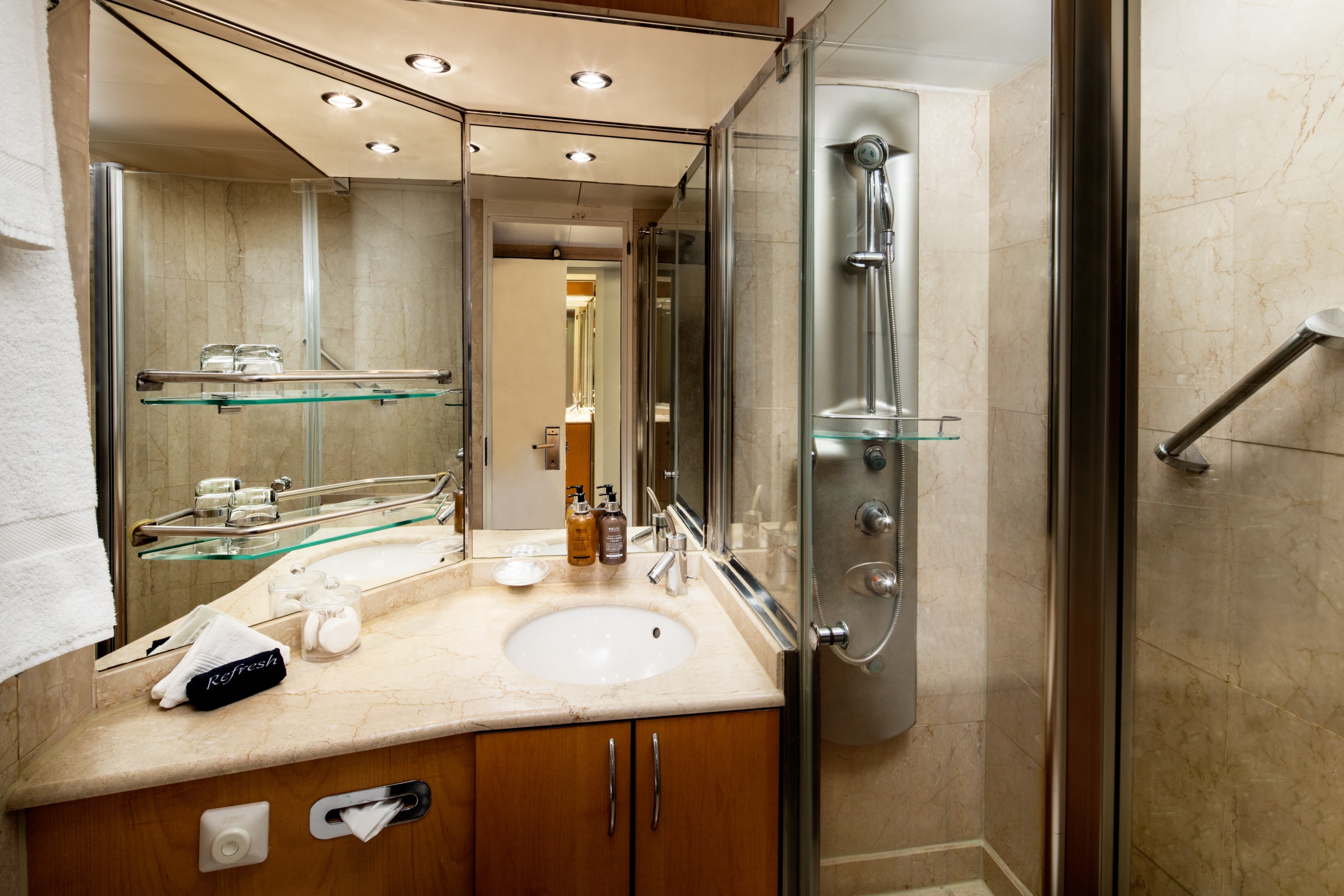
Yacht Club Deck 2 staterooms average 195 sq.ft./18.12 sq. meters. These ocean view staterooms include a marble-lined bathroom in select staterooms with a multi-jet shower and a well-appointed open living area with sofa, chair, cocktail table, built-in dresser with writing desk, and ample closet space. Most staterooms offer a choice of 2 twin beds or 1 queen bed. Please contact the reservations team to confirm your choice. Yacht Club Deck 2 staterooms feature two (2) 17” round windows instead of a picture window.
Additional Amenities:
- Well-stocked beverage refrigerator
- 55″ flat-screen TV with “Infotainment”
- Direct-dial telephone
- Safe
- Climate Control
- Make-Up Mirror
- Hair dryer
- Elm Organics bath amenities
- Superior Belgian bed & bath linens
- Luxury Bath Robes & Slippers
- Wooden & Padded Silk clothes hangers
- 24-hour in-stateroom “Small Bites” menu
- Wifi Available
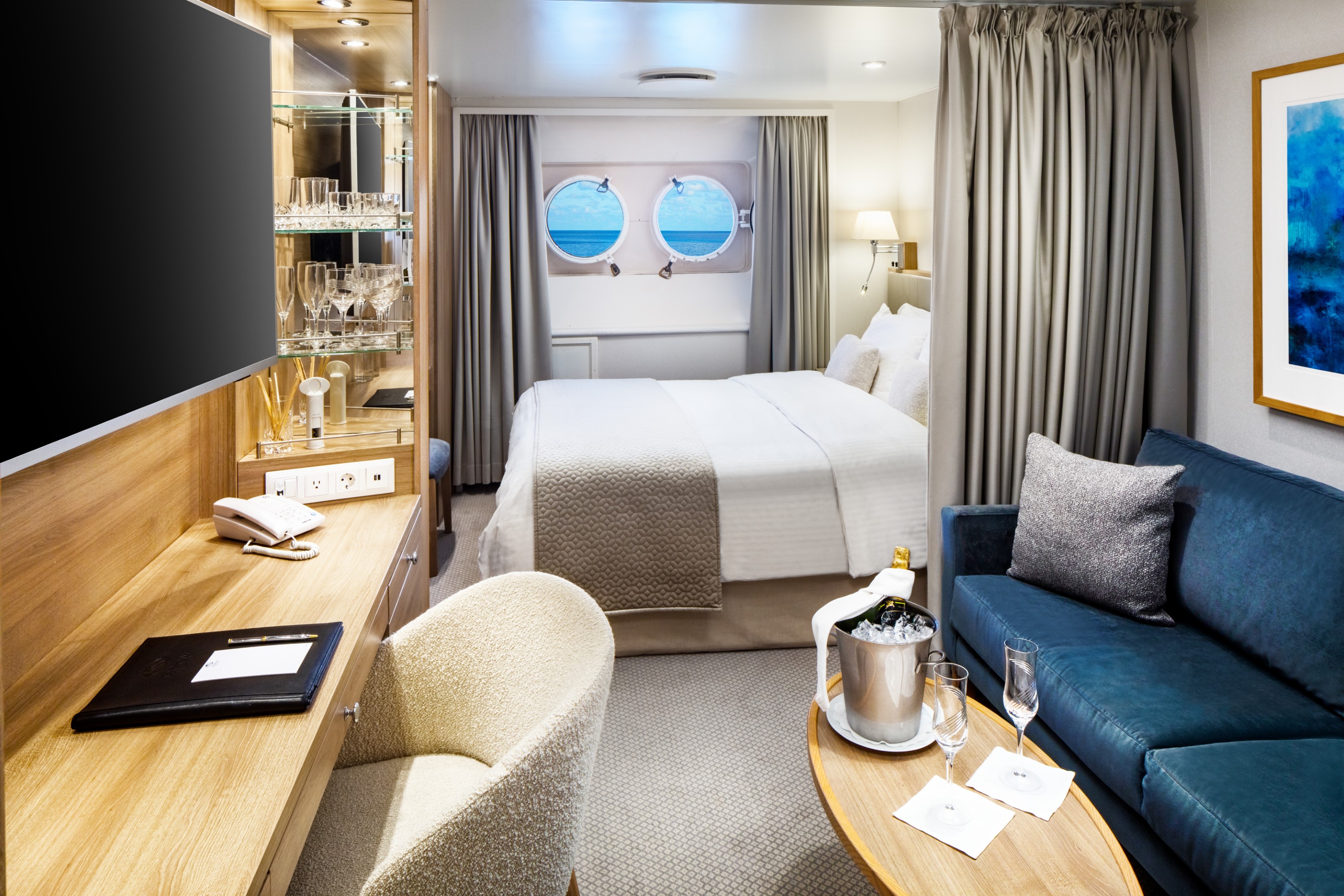


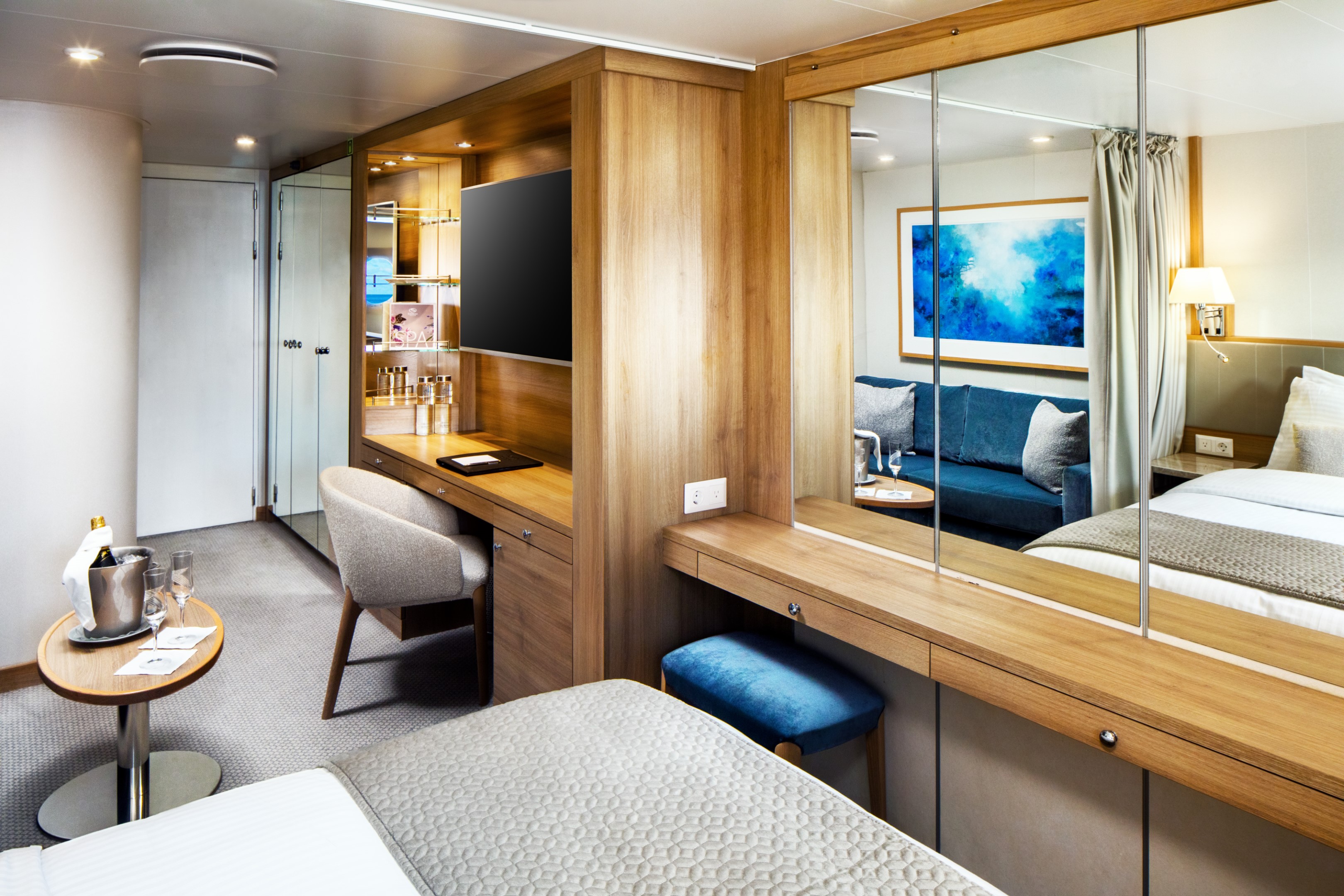
SeaDream II
Named “Best Small Luxury Cruise Ship of 2015” in ForbesLife, twin mega-yachts SeaDream I & II are intimate boutique ships that provide a unique travelling experience unlike any other cruise vacation. The expression “yachting” is not only a statement about size; it’s a lifestyle aboard our intimate vessels with the service of 95 crew members and 112 guests that make each guest feel like they are on their very own private luxury yacht. Chic and stylish, SeaDream’s 56-stateroom yachts are favoured for its elegant informality, highly personal service, inclusive open bar and gratuities, all ocean views staterooms and suites, luxury accommodations and world-class cuisine.
Excellence Begins at Embarkation
We welcome guests with the “SeaDream treatment” from the moment they come aboard. The yachting experience begins with a warm welcome from the captain with cocktails and hors d’oeuvres. The rest is up to you. Whether by day or night lounging on our signature Balinese Dream Beds, indulging in our Dream Cuisine, sipping a SeaDream cocktail at the back of the yacht, relaxing in the SeaDream Spa or being active with our Watersports Marina, this is your yacht, make it uniquely yours.
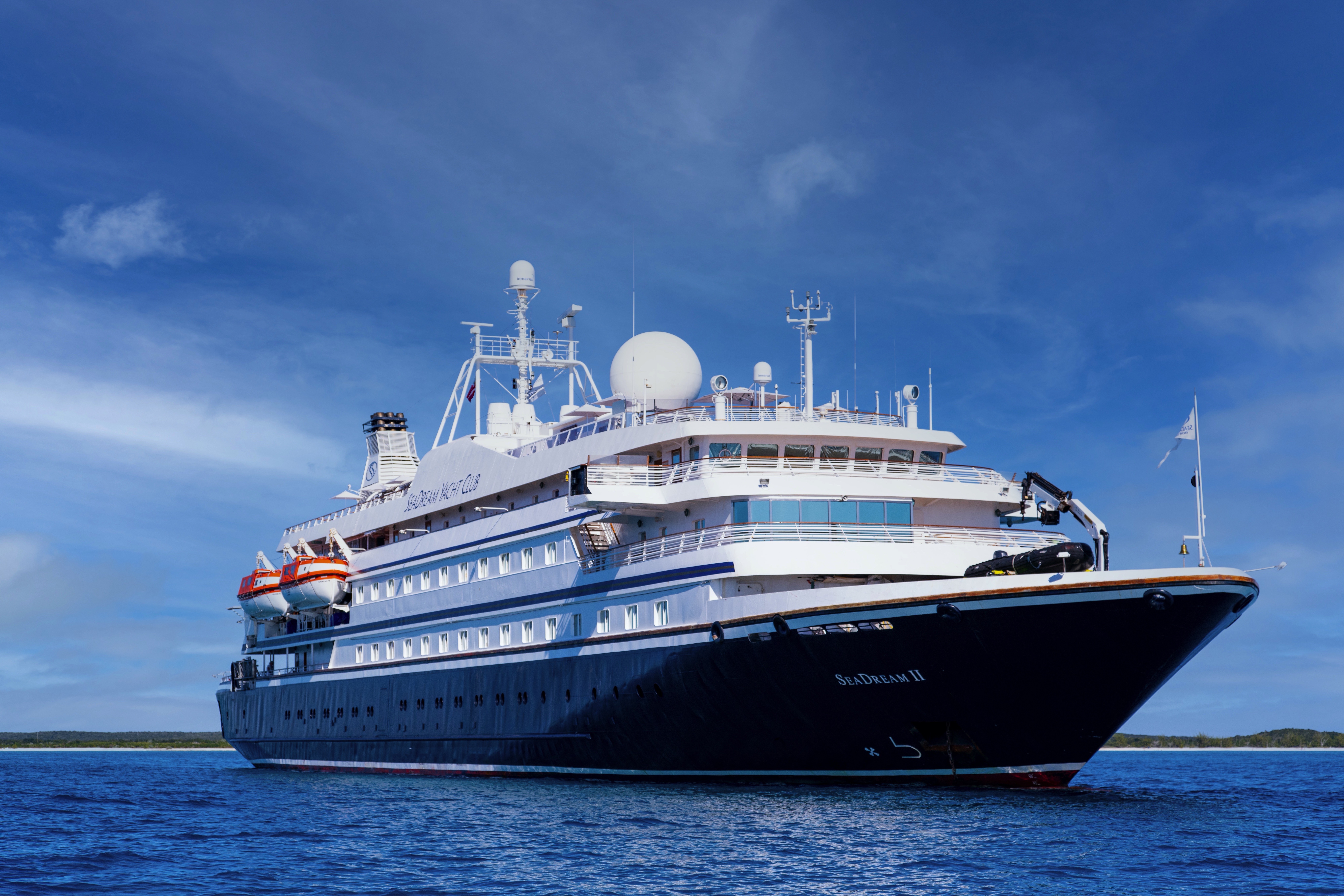
Ship Facts
| Launch Year | 1985 | ||||||||
| Refit Year | 2022 | ||||||||
| Language | en | ||||||||
| Gross Tonnage | 4300 | ||||||||
| Length | 105 | ||||||||
| Width | 14 | ||||||||
| Currency | USD | ||||||||
| Speed | 18 | ||||||||
| Capacity | 112 | ||||||||
| Crew Count | 95 | ||||||||
| Deck Count | 5 | ||||||||
| Cabin Count | 56 | ||||||||
| Large Cabin Count | 0 | ||||||||
| Wheelchair Cabin Count | 0 | ||||||||
| Electrical Plugs |
|
Deck 6
- Balinese Dream Beds
- Top Of The Yacht Bar
- Golf Simulator
- Sun Deck & Sun Beds
- Couples Hot Tubs

Deck 5
- Topside Restaurant
- Medical Facility
- Open Promenade
- Elevator
- Bridge

Deck 4
- Al Fresco Dining & Lounging
- Library
- Piano Bar
- Casino
- Admiral Suite
- SeaDream Spa
- Fitness Centre
- Beauty Salon
- Elevator
- Yacht Club Staterooms
- Admiral Suite

Deck 3
- Pool / Hot Tub
- Pool Bar
- Card Room
- Main Salon / Main Salon Bar
- Concierge & Boutique
- Yacht Club Staterooms
- Commodore Suites
- Owner's Suite

Deck 2
- Retractable Water Sports Platform Marina
- Dining Salon
- Yacht Club Staterooms
- Commodore Suites

A Gastronomical Experience
Experience what wining & dining on your very own yacht would be like with our expert chefs and sommeliers. We are dedicated to offer the best experience possible for each of our guests, including excellent gourmet dishes and the finest wine selection at sea. Our multi-course menu is specially designed with elegant, light portions in mind so that an entire service may be enjoyed, from introductory first courses, to decadent desserts, to expertly paired wines. It’s a gastronomical experience that will have you indulging in every bite. Bon Appétit!
Signature Dream Cuisine
Dining aboard our luxurious yachts is wherever and with whomever you choose. Selections are hand-crafted for every diet and taste, from plant-based meals to perfectly aged steaks and everything in between. All cuisine is prepared a la minute and served al fresco or in the elegant dining salon, with international menus that incorporate local flavours of the region with the freshest, high-quality ingredients and wine lists inspired by your destination. In true yachting style, our dining spaces can accommodate all 112 guests dining together either indoors or al fresco.
Aside from the main menu, SeaDream offers an “Always Available”, à la carte SeaDream selection of favourite cuisine dishes. Dining experiences also include Welcome Aboard cocktails and hors d’oeuvres, daily Early Risers Coffee, Topside Restaurant lunch dining, poolside sandwiches, afternoon snacks, tea service and freshly baked Small-Batch Dream Cookies and pastries. SeaDream’s menus also incorporate gourmet coffees and herbal tea selections, which are available anytime upon request.
Plant-Based & Organic Cuisine
As a pioneer in the living foods movement, we have carefully curated a variety of delicious and nutritious plant-based dishes that showcase the best of local and seasonal ingredients, providing a suite of healthy and sustainable dining choices. Expect a wide range of creative and flavourful vegan dishes, such as freshly prepared salads, hearty soups, flavourful stir-fries, and delectable desserts, all made with sustainable and locally sourced ingredients, including flavours from local farmers’ markets.
Specialty Options
In addition to vegan dining, SeaDream Yacht Club offers a range of other dietary options to cater to various preferences and dietary needs. Whether you are vegetarian, gluten-free, high-protein, or pescatarian, our culinary team is dedicated to ensuring that your dining experience on board is nothing short of exceptional. We even provide guests with Keto-friendly selections to accommodate those with specific dietary requirements.
Topside Restaurant
Indulge in a Signature SeaDream experience with our gourmet 5-star dining, prepared à la minute and served al fresco at the Topside Restaurant.
Aside from the main menu, SeaDream offers an “Always Available”, à la carte SeaDream selection of favourite cuisine dishes. Dining experiences also include Welcome Aboard cocktails and hors d’oeuvres, daily Early Risers Coffee, Topside Restaurant lunch dining, poolside sandwiches, afternoon snacks, tea service and freshly baked Small-Batch Dream Cookies and pastries. SeaDream’s menus also incorporate gourmet coffees and herbal tea selections, which are available anytime upon request.
Dining Salon
Indulge in a Signature SeaDream experience with our gourmet 5-star dining in the elegant Dining Salon. Immerse yourself with delectable flavours with selections like a guest favourite- L’oeuf Poule Au Caviar “Surprise”, succulent lobster, filet mignon, and delectable desserts.
Desert Extravaganza
The voyage of a lifetime deserves the dessert of a lifetime. Our Dessert Extravaganza is an elegant, after dinner gathering. The star of this party is the delectable display of desserts including baked treats, tarts, pies, cakes, ice cream and bananas foster. The perfect end to the perfect day.
An elegant, after dinner gathering. The star of this party is the delectable display of desserts including baked treats, tarts, pies, cakes, ice cream and bananas foster. Your favourite libation, music, fresh ocean air and the twinkle of candles and stars make this the perfect ending to another special SeaDream day
Healthy Corner and Raw & Living Menu
Raw, Vegan & Organic
The only “raw food” or “living food” menu at sea, guests have the option of experiencing an array of dishes prepared only with raw, organic and vegan ingredients, none of which are heated above 118º F. The menu, created in conjunction with the Hippocrates Health Institute even includes dessert options, highlighting light yet indulgent selections. Explore Raw and Living Food onboard Seadream.
Healthy Corner
Create your own healthy dish with our healthy corner. It’s all about choices. Customise your lunch with the following, healthy and organic selections: Alfalfa Sprouts • Fresh Vegetable Crudities • Rocket Lettuce • Lemon Wedges • Raw Capsicum • Raw Broccoli • Raw Cauliflower • Raw Red Radish • Raw Carrot Julienne • Raw Mushroom Slices • Lightly blanched Asparagus • Roasted Pignolias • Roasted pecan Nuts • Roasted Sesame Seeds • Sundried Tomato Tapenade • Black Olive Tapenade • Green Olive Tapenade • Artichoke Tapenade • Organic Olive Oil • Organic Sesame Oil • Braggs Aminos • Tamari
Specialty Options
Aside from the Raw Food Menu, SeaDream’s daily menus include vegetarian and gluten-free selections. Sugar-free options are always available on request. For other dietary needs, guests can consult with SeaDream at any time before the voyage to ensure that we fulfil your special needs.
SeaDream Tea Menu
SeaDream’s tea menu features (12) teas exclusively prepared for SeaDream by a master blender in Kent, United Kingdom. These bold and exciting selections are solely available only onboard. All tea is served in individual “Bodum” 0.51 teapots with plunger tea diffusers and waiters pay special attention to every pot that they serve. When the water is poured, the servers immediately start a timer so that the appropriate time is indicated to each guest upon being served. When the desired time expires, guests can depress the plunger to stop the diffusing process. All tea is served with homemade, gluten-free tea cookies.
Wine & Spirits
Dream gourmet cuisine harmonised with rich and colourful wine flavours enhances the overall gourmet dining experience. Inclusive wine pairings are thoughtfully selected to please your gastronomic palate. An open bar with select brands is available throughout the day, with beverages served upon request anywhere on board, including the Top of the Yacht Bar, featuring 360° views of the surrounding landscapes and seascapes. The Pool Bar offers refreshing beverages throughout the day and the Main Salon is enjoyed by guests for pre-dinner cocktails. After dinner service, the Piano Bar and Casino is a favourite locale for a nightcap.
For our wine connoisseur guests, specially designed Wine Voyages are available in the Mediterranean from May-November. Explore the wonderful flavours and history by immersing yourself with carefully crafted selections of world-renowned wineries, onboard or ashore. Our Wine Director designed these wine voyages exclusively for our SeaDream guests. Wine Voyages include specialised winery visits and land adventures with activities to satisfy the sommelier in you.
Premium Selections
In addition to complimentary wine selections, the SeaDream cellar is stocked with a varied collection from the Old and New World. A wide selection of rare and trendy wines including the Château Ducru Beaucaillou Grand Cru Classé, 2002; and Insignia, Napa Valley, 2006; is available. A premium listing of spirits and concoctions is available, offering a selection of rare whiskeys and cognacs, trendy gins and vodkas, all at attractive prices.
We welcome guests with the “SeaDream treatment” from the moment they come aboard. The yachting experience begins with a warm welcome from the captain with cocktails and hors d’oeuvres. The rest is up to you. Whether by day or night lounging on our signature Balinese Dream Beds, indulging in our Dream Cuisine, sipping a SeaDream cocktail at the back of the yacht, relaxing in the SeaDream Spa or being active with our Watersports Marina, this is your yacht, make it uniquely yours.
By Day
Be splendidly spoiled throughout the day. Signature SeaDream features include our Balinese Dream Beds for lounging at sea and the Watersports Marina Platform where you can enjoy water sports right off the back of the yacht. “Seas the Day” the SeaDream way.
By Night
Music and a lively social atmosphere fills the yacht by night. Enjoy your favorite after dinner cocktail and request a tune at the Piano Bar. Visit the Top of the Yacht Bar for breathtaking night views and mingle with new friends, or try your luck at the Casino on Deck 4. The night is waiting for you on SeaDream.
Starlit Movies™
The pool deck becomes your cinema under the open night sky. Get comfortable in a reclining lounge chair and watch a concert or movie on the outdoor big screen. Your port of call becomes your grand backdrop. Pillows, blankets, fresh popcorn and bar service make this a movie experience like no other.
Balinese Dream Beds
Take time to watch the world go by on SeaDream’s Signature Balinese Dream Beds. These specially designed beds are the perfect place to catch the views, read a book and sip your favorite beverage. Select a cozy corner of the yacht and take that little catnap you have missed all year. Our comfortable outdoor platform beds are designed with afternoon naps and sunbathing in mind. These thick cushion beds, with throw pillows and individual reclining backs, are the perfect spot on the yacht to stretch out and enjoy unobstructed ocean views and cool sea breezes.
Our signature Balinese Dream beds may be transformed at night to sleep and gaze upon the stars. Curl up in luxurious comfort with plush belgian bed linens and admire the starry night sky on a clear night. The soothing sound of the sea and cozy setting make this a magical, unforgettable experience.
Casino, Piano Bar & Library
If you’re feeling lucky, begin your evening entertainment with a hand at the Blackjack table in the Casino on Deck 4. Just steps away, enjoy an after dinner drink at the Piano Bar, a relaxed and social lounge area where you enjoy listening to live guitar and piano music. Request your favorite tune and feel free to sing along. Or should you wish for something more quiet, take refuge in the Library. Enjoy a good read from our large selection of books or challenge a fellow yachtsman in a selection of board games. Computer and printer are also available.
Concierge & Boutique
Our Concierge and Shop Manager are here to assist.
Top of the Yacht Bar
Whether you are the first one to greet the day at the Early Risers Coffee or you enjoy a fine cigar and cognac after dinner, the Top of the Yacht Bar is the social heart of the yacht. Take in the sea breeze and 360° views. Before the sunrise, make your way to the Top of the Yacht Bar to greet the day at the Early Risers Coffee. Throughout the day, you may enjoy your favorite drink or request a special SeaDream cocktail from our expert bartenders. They are perhaps the most loved crew members on board. For those meals in between, order a light bite off the Insuite & Ondeck menu. Gourmet cheese platter anyone?
As day turns to night, enjoy the picturesque sunsets at the Top of the Yacht Bar. The night sky transforms the deck to a memorable night with accompanying music and a social atmosphere. Mingle with friends you meet on board for a night of cocktails, live guitar music, dancing and 360º views of the twinkling stars.
Pool Bar
Where cocktails, iced teas & finger foods abound.
Sun Deck & Sun Beds
Lounge with breathtaking panoramic views.